You’ve probably heard of CBD oil. Millions worldwide use CBD oil and other CBD products to help with pain, anxiety, sleep problems, and many other common symptoms and disorders.
But what is CBD exactly? Does it work? What does science say about its effects? Is it worth the hype? This comprehensive, evidence-based CBD 101 guide will answer these and many other questions.
We’ll go in-depth and cite evidence from over 150 of the latest peer-reviewed research studies. Here’s everything you need to know about CBD.
Table of Contents
- What is CBD?
- CBD Benefits
- Epilepsy and Seizures
- Anxiety Disorders
- Depression
- Chronic Pain
- Arthritis
- Sleep Disorders
- Neurodegenerative Disorders
- Blood Pressure & Cardiovascular Health
- Skin Disorders
- Digestive Disorders
- Cancer
- Drug Addiction
- Diabetes
- Migraines
- Psychosis
- Autism
- Workout Benefits
- CBD and Obesity
- Multiple Sclerosis
- Asthma
- Bone Health
- Covid-19
- Benefits for Pets
- How Does CBD Work?
- Full-Spectrum vs. Broad-Spectrum vs. Isolate CBD
- CBD Consumption Methods
- Types of CBD Products
- How Are CBD Products Made?
- CBD Dosage
- CBD Safety
- Choosing the Right CBD Brand
- Choosing the Right CBD Product
- CBD FAQs
What is CBD?
Cannabidiol (CBD) is a naturally occurring substance in cannabis. It’s one of more than 120 compounds called phytocannabinoids (1). Most of the effects of cannabis — both recreational and medicinal — come from these natural compounds. CBD has been consumed for millennia as part of cannabis.
You’ve probably heard of tetrahydrocannabinol (THC) — the phytocannabinoid responsible for the intoxicating effects of marijuana.
Unlike THC, CBD is non-intoxicating, which means it doesn’t get you high. You can take CBD to get the benefits of cannabis without worrying about the mind-altering effects.
CBD has been shown to have an exceptionally wide range of potential health benefits. It’s not difficult to see why so many people are using it.
Did you know? Many people incorrectly believe that CBD is non-psychoactive. By definition, a psychoactive substance is anything that affects brain function. Since CBD has anti-anxiety, antidepressant, and antipsychotic effects, it is indeed psychoactive (2). It just doesn’t intoxicating you the way THC does.
Where Does CBD Come From?
There are two types of cannabis: marijuana and hemp. Marijuana contains a lot of THC but little CBD. Hemp is the opposite: it’s low in THC (no more than 0.3%) but high in CBD.
CBD products are almost always sourced from hemp because it’s cheaper and doesn’t contain enough THC to cause intoxication. That’s also why hemp is legal in the US and many other countries.
CBD vs. THC At a Glance
| CBD | THC | |
| Source | Usually sourced from hemp (low THC, high CBD cannabis) | Usually sourced from marijuana (high THC, low CBD cannabis) |
| Intoxication | Non-intoxicating | Makes you high |
| Legality | Legal in the US and many other countries | Illegal in most countries and US states |
| Uses | Dietary supplement, antiepileptic drug | Recreational drug and medicine |
| Main Shared Benefits | Pain, inflammation, nausea relief | Pain, inflammation, nausea relief |
| Main Unique Benefits | Anxiety relief, anticonvulsant | Lowers eye pressure, stimulates appetite (3) |
| Common Side Effects | Tiredness, drowsiness, diarrhea, dry mouth | Similar to CBD, plus mind-altering effects such as memory impairment, anxiety, paranoia |
| Most Common Products | CBD oil, gummies, capsules, topicals, prescription drugs (Epidiolex) | Marijuana and THC-only prescription drugs |
Hemp Oil vs. CBD Oil: Not the Same Thing
Although they’re both sourced from hemp, hemp oil and CBD oil are not the same.
The key difference is that hemp oil comes from hemp seeds, which do not contain any cannabinoids (unless contaminated during the manufacturing process).
Better known as hemp seed oil, it’s mostly used as a healthy oil rich in essential fatty acids and other nutrients. It’s also sometimes taken as an oral or topical dietary supplement.
Meanwhile, CBD oil comes from the hemp plant’s flowers and other above-ground parts. These parts of hemp are covered in hair-like structures called trichomes, which contain CBD and other cannabinoids (4).
The ingredients list is the easiest way to tell apart hemp oil and CBD oil. Hemp oil will be listed as “hemp seed oil,” whereas CBD oil will say something like “CBD,” “cannabidiol,” or “hemp extract” in addition to other ingredients.
It’s even better to check third-party tests to confirm the presence of CBD.
CBD Legality
Hemp-derived CBD products became legal in the United States thanks to the 2018 Farm Bill. This bill made hemp into a legal agricultural commodity that can be grown by farmers, which means it can also be used to make CBD products.
Having said that, there are some stipulations. For example, hemp can only contain 0.3% or less THC. Also, individual states can regulate hemp and, by extension, hemp-derived CBD products in their own way. While most align with federal policy, a few have more restrictive laws.
CBD also became legal in Canada in 2018 and in Thailand in 2022 when these two countries legalized cannabis.
Meanwhile, the legal status of CBD in other countries varies drastically. Generally speaking, it can fall into one of four categories:
- Legal
- Gray area (unclear)
- Medical-only use (by prescription)
- Completely banned
As a rough guideline, CBD is:
- Legal in most European countries
- Mostly restricted to medical use in South America, Australia, and New Zealand
- Banned in Africa (except South Africa) and the Middle East
- Ranges from illegal to legal for other Asian countries
Glossary of Key Terms
- Randomized controlled trial (RCT): A study where people are randomly divided to test a treatment (like CBD) vs. a standard or “fake” placebo treatment. By comparing outcomes, researchers determine the treatment’s effectiveness. RCTs are considered the gold standard in medical research.
- Review paper: Unlike original studies that present new findings, a review paper summarizes the current state of knowledge on a specific topic, providing an overview of key concepts, methodologies, and findings from multiple studies.
- Neurotransmitter: Chemical messenger in the brain that helps transmit signals between nerve cells, influencing mood, sleep, concentration, and many other functions.
- Protein: Large molecules made up of amino acids with many roles in the body, such as building and repairing tissues, acting as enzymes, transporting substances, and supporting immune responses.
- Receptor: A structure inside a cell or on its surface that binds with specific molecules (like cannabinoids), triggering a response in the cell.
- Ion channel: Ion channels are specialized cell proteins that allow ions (charged atoms or molecules) to move in and out of cells. These channels play vital roles in numerous physiological processes, like electrical signaling in neurons and pH regulation in the stomach.
- Enzyme: A protein that speeds up chemical reactions in the body.
- Bioavailability: the portion of a substance you take that’s actually absorbed by the body. If you inject CBD (or any other substance) into the veins, it would have 100% bioavailability since it’s going directly into the bloodstream.
CBD Benefits
According to decades of research studies, CBD has been shown to have many beneficial effects, including: (5)
- Antioxidant
- Anti-inflammatory
- Antiemetic (anti-nausea/vomiting)
- Antidepressant
- Anxiolytic (anxiety relief)
- Antipsychotic
- Analgesic and antinociceptive (pain relief)
- Neuroprotective
- Anticonvulsant
- Anticancer (6)
- Antibacterial
- Antiviral (against some viruses) (7)
- Immunomodulatory/immunosuppressive (8)
- Anti-addictive properties
It’s no surprise that CBD may help with a wide range of symptoms and conditions. Here’s a closer look at CBD’s potential health benefits.
Epilepsy and Seizures
There is strong clinical research evidence that CBD can help with epileptic seizures, particularly the treatment-resistant types that typically occur in children.
The evidence is so compelling that the CBD-based drug Epidiolex is approved in the US and Europe for the treatment of Lennox-Gastaut syndrome (LGS), Dravet syndrome (DS), and tuberous sclerosis complex (TSC), three rare and severe types of epilepsy (9).
For example, a 2018 review of 36 studies, most of which looked at children with rare and severe types of epilepsy, concluded that CBD reduced the number of seizures and stopped them entirely in some people (10).
Similarly, a 2023 review of 6 randomized controlled trials (RCTs), the gold standard of clinical research, concluded that CBD was highly effective at treating seizures caused by LGS, DS, and TSC (11).
Anxiety Disorders
Relieving anxiety is one of the most common uses of CBD. It’s also backed by some of the strongest research evidence (after CBD’s anti-epileptic effects):
- A 2011 Brazilian study found that CBD capsules reduced anxiety caused by public speaking in people with social anxiety disorder (SAD) (12)
- A 2019 Japanese study found that CBD oil reduced anxiety in teenagers with SAD (13)
- A 2022 Australian study of 31 people with treatment-resistant anxiety disorders found that CBD reduced anxiety severity and depressive symptoms (14)
- A 2022 study of 14 people with moderate-to-severe anxiety found that full-spectrum CBD oil improved anxiety as well as mood, sleep, and quality of life (15)
- A 2023 study of 198 people with anxiety disorders reported “improved anxiety, depression, fatigue, and the ability to participate in social activities” after using medical cannabis, particularly CBD-only preparations (16)
- A 2019 Colorado study found that CBD reduced the symptoms of post-traumatic stress disorder (PTSD), another type of anxiety disorder (17)
All in all, researchers believe that CBD has potential in the treatment of all sorts of anxiety disorders, including SAD, generalized anxiety disorder (GAD), panic disorder (PD), PTSD, and obsessive-compulsive disorder (OCD) (18).
Depression
Alongside anxiety, depression is the most common mental disorder worldwide. Early studies suggest that CBD has antidepressant effects (19).
Unfortunately, there aren’t any clinical studies of CBD where depression was the main focus. For now, the only evidence we have is from studies of people with anxiety disorders, where mood symptoms were evaluated as a secondary measure:
- One 2022 study of 14 adults with moderate-to-severe anxiety reported that CBD oil improved mood as a secondary outcome (15)
- A similar 2022 Australian study in adults with treatment-resistant anxiety reported that CBD improved depressive symptoms (14)
- A 2023 study of 198 people with anxiety disorders reported improvements in depression (16)
- A 2018 study of 20 people suffering from cannabis use disorder found that CBD improved depressive symptoms (20)
While these findings look promising, they need to be replicated in high-quality clinical trials before we have solid evidence that CBD can help with depression. As concluded by a 2022 review paper:
there is insufficient evidence to recommend cannabidiol as a treatment for mood disorders, and high-quality clinical trials are urgently needed.
(21)
Chronic Pain
Cannabis, which contains both THC and CBD, has been used to treat pain and inflammation for millennia (22). Today, chronic pain relief remains the most common indication for using cannabis and cannabis-based medicine (23).
Although these effects have been usually attributed to THC, recent research has demonstrated that CBD also has anti-inflammatory and analgesic (pain-relieving) effects.
Here’s a look at the key research findings:
- A 2020 study of 97 chronic pain sufferers taking opioid painkillers found that full-spectrum CBD oil reduced opioid use. After using the CBD oil for eight weeks, over 50% of the 97 study participants lowered or stopped using opioid painkillers, and 94% said CBD improved their quality of life (24).
- Another 2020 study found that topical CBD oil improved neuropathic pain in 29 people (25)
Additionally, multiple chronic pain patient surveys have reported promising results:
- A 2020 survey of 400 New Zealand patients found that CBD oil significantly improved chronic pain (26)
- A 2020 survey of 58 palliative care patients in Florida found that half of those using CBD reported reduced pain (27)
- A 2021 survey of 253 chronic pain sufferers reported that out of those taking CBD, 59% reported improved pain and 68% lowered their pain medication use (28)
- Another 2021 survey of 2701 people with fibromyalgia and other chronic pain conditions reported slight to serious improvements in pain and other symptoms (29)
Tying everything together, a 2023 review paper concluded that “…CBD seems to be a promising strategy to overcome the lack of efficacy of conventional treatment for chronic pain…” (30)
That said, more high-quality research is needed. For now, the best evidence is restricted to studies that use whole-plant cannabis or Sativex, a 1:1 THC: CBD drug (31). This makes it difficult to say how much of the pain relief comes from CBD compared to THC and other cannabis compounds.
Arthritis
Arthritis is another common reason people turn to CBD. That’s not surprising since it involves both inflammation and pain, two common symptoms that CBD can help with. Early findings of using CBD for arthritis are promising:
- In a 2022 RTC study of 18 people with thumb basal joint arthritis, topical CBD improved pain and disability (32)
- A 2022 survey of 428 arthritis patients who used CBD found that 83% experienced less pain and 66% improved physical function, with an average 44% reduction in pain. The majority (60.5%) also reduced or stopped taking other pain medications (33).
But again, more high-quality studies are needed before we can say anything conclusive. For now, most of the evidence comes from studies of rats and mice.
Sleep Disorders
Another common issue people use CBD products for is difficulty sleeping. There’s growing evidence that CBD can help with sleep:
- A 2023 RCT study looking at the effects of CBD in 1793 adults with sleep problems found that 15 mg CBD was as effective as 5 mg melatonin at improving sleep quality (34)
- A 2023 pilot study of six insomniacs found that pure CBD (300 mg) combined with eight calming terpenes improved restorative sleep (35)
- In a 2019 study of people taking opioid painkillers, full-spectrum CBD oil improved sleep quality as one of the secondary measures (24)
- In a 2022 study of 14 adults with moderate-to-severe anxiety, CBD oil improved sleep as one of the secondary outcomes (15)
- In a 2019 study of 53 children with autism spectrum disorder (ASD), CBD improved sleep in 71.4% (as a secondary measure) (36)
- A 2011 study of 33 people suffering from REM sleep behavior disorder (RBD) found that 300 mg of CBD improved sleep satisfaction (37)
These findings highlight that CBD can help both directly and indirectly by countering anxiety, pain, stress, depression, and other issues that cause sleeping problems.
Finally, a 2023 review on the use of CBD for insomnia concluded that “…CBD alone or with equal quantities of THC may be beneficial in alleviating the symptoms of insomnia.” (38)
Neurodegenerative Disorders
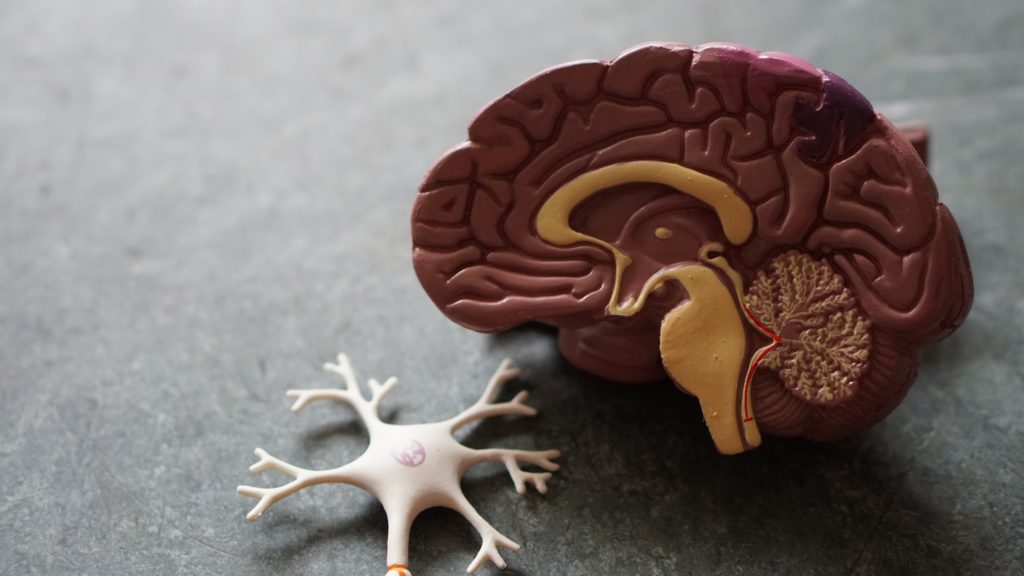
Neurodegeneration is the breakdown of the function and structure of neurons. It plays a central role in Alzheimer’s, Parkinson’s, Huntington’s, and other incurable neurological diseases.
While most of the evidence is restricted to animal investigations, a growing number of human studies are showing that CBD has neuroprotective effects:
- In a 2014 RCT study, CBD improved well-being and quality of life in 21 Parkinson’s disease (PD) sufferers (39)
- In a 2008 study, CBD improved psychosis in six people with PD (40)
- A 2019 pilot study of ten women with severe dementia found that cannabis oil containing a 2:1 ratio of CBD to THC improved behavior, reduced daily care needs, and allowed half of the patients to reduce or stop taking other prescription drugs (41)
- In a 2020 study of 20 healthy volunteers, CBD improved cerebral blood flow to parts of the brain involved in memory processing, suggesting that it may help with Alzheimer’s and other conditions linked to issues with memories, like PTSD (42)
A 2023 review of CBD’s neuroprotective effects concluded that:
A long history of using CBD, extensive experimental evidence, a multitude of anecdotal clinical studies, and a few descriptive clinical studies hint at the potential clinical value of CBD in the treatment of neurological disorders.
(43)
Blood Pressure & Cardiovascular Health
The application of CBD and other cannabinoids for heart and cardiovascular health is a relatively new area of research. Early studies suggest that CBD can lower blood pressure and have other beneficial effects on the cardiovascular system:
- A 2017 study found that CBD can lower resting blood pressure and reduce the rise in blood pressure caused by stress in healthy adults (44)
- A 2023 study of 16 adults with untreated hypertension found that CBD reduced arterial stiffness and blood pressure (45)
- A 2007 study found that CBD protected coronary artery cells from damage caused by high blood sugar (46)
- A 2010 animal study found that CBD had a positive effect on cardiomyopathy, a cardiovascular complication of diabetes (47)
- A 2017 review of multiple animal studies concluded that CBD can increase blood flow during a stroke and reduce stress-related increases in blood pressure and heart rate (48)
- A 2007 study reported that CBD protected the hearts of mice against damage caused by myocardial ischemia (reduced heart blood flow) (49)
As summarized by a 2020 review, CBD has been shown to have many positive effects in animal studies of heart disease, stroke, cardiovascular complications of diabetes, and other cardiovascular conditions (50). But human studies are lacking.
Skin Disorders
Another area in which CBD holds much promise is skin conditions. This isn’t all that surprising since there’s mounting evidence that the endocannabinoid system plays a key role in skin health, and its dysfunction is linked to itching, acne, eczema, psoriasis, and many other skin issues (51).
Although most of the evidence is limited to animal and petri dish studies, early human findings are promising:
- In a 2019 study of 20 people with psoriasis and eczema, a CBD-infused ointment improved psoriasis symptoms, scarring, as well as hydration, elasticity, and other measures of skin health (52).
- A 2021 observational study of 14 people with atopic dermatitis found that 1% CBD gel reduced symptom severity, including itchiness (53)
- A 2023 RCT study of 69 subjects with recurrent canker sores found that topical 0.1% CBD reduced ulcer size and accelerated healing without side effects (54)
- A 2022 study of 10 people with skin imperfections (like pores and wrinkles) found that the combination of retinol and CBD improved facial skin quality, including the reduction of visible pores, dehydration, surface roughness, and wrinkles (55)
According to a 2023 review paper, CBD has the potential to help with:
ATD, psoriasis, acne, epidermolysis bullosa, systemic sclerosis, seborrheic dermatitis, scalp psoriasis, androgenetic alopecia and melanoma leading to better outcomes and improved patient quality of life.
(56)
Digestive Disorders
CBD has been shown to help with some digestive symptoms, such as nausea, and may even have the potential to treat chronic digestive disorders such as inflammatory bowel disease (IBD).
One 2018 RCT study looked at whether CBD can have a positive effect on ulcerative colitis, one of the two main kinds of IBD. Patients were given a placebo or CBD-rich cannabis extract. Only the CBD group saw an improvement in symptoms and quality of life (57).
A similar 2021 RCT study looked at the effects of cannabis oil with a 4:1 ratio of CBD to THC in 56 patients with Crohn’s disease, the second type of IBD. They experienced significant improvements in quality of life (58).
Cancer
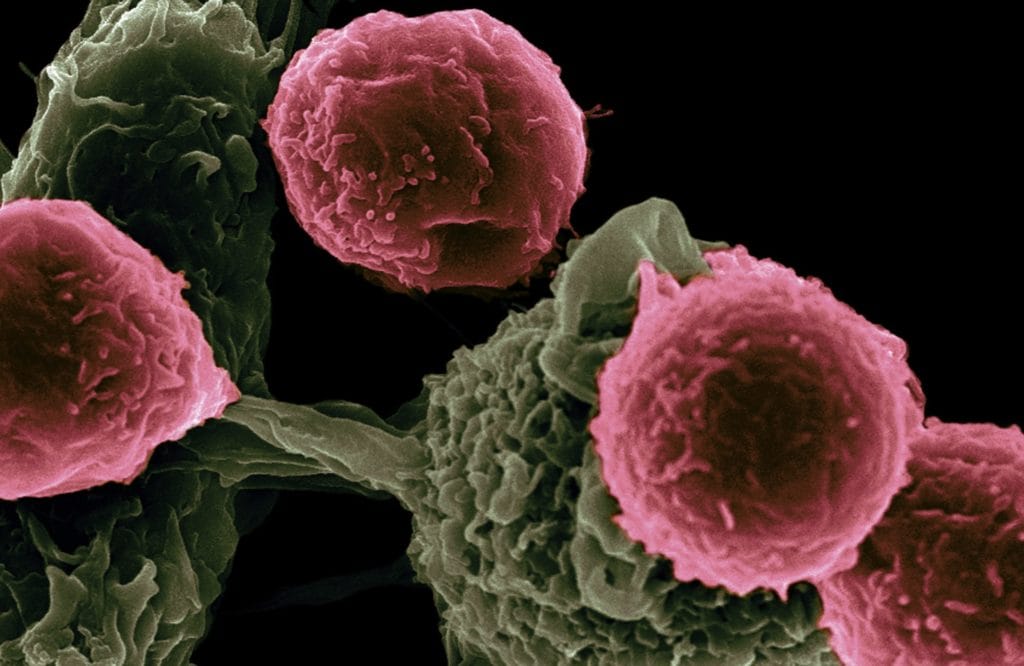
Cannabinoids are already utilized for cancer treatment. In particular, many cancer patients use marijuana and pure THC drugs to ease chronic pain, stimulate appetite, and reduce chemotherapy-induced nausea (59).
CBD can offer similar benefits. For example, one of the only human studies of CBD for cancer looked at the effects of pure THC and CBD in patients with severe, treatment-resistant cancer pain.
THC-only treatment had no significant effect, whereas the combination of CBD and THC reduced pain by 30% or more in 43% of the study participants (60).
On top of that, numerous animal and petri dish studies have reported anticancer effects and benefits from adding CBD to standard cancer treatment. As concluded by a 2022 review paper:
Overall, the current study supports the notion that CBD can offer positive outcomes in cancer treatment. Future research in the area of CBD and cancer should aim to examine the efficacy and safety of CBD in human clinical trials…
(61)
Nonetheless, human studies are sorely needed.
Drug Addiction
One of the most promising yet the least explored uses of CBD is the treatment of drug addiction. Research indicates that CBD can help reduce drug cravings and withdrawal symptoms, helping people quit a wide variety of addictive substances:
- In a 2013 study, 24 smokers used a CBD inhaler for a week. Compared to placebo, the CBD group smoked 40% fewer cigarettes, and some continued to smoke less after the study ended (62).
- A 2018 study found that a single 800 mg dose of CBD reduced the prominence and attractiveness of cigarette cues in smokers who have abstained from smoking overnight (63)
- A 2023 study of 20 nicotine vape users found that oral CBD reduced nicotine withdrawal and anxiety after a 4-hour abstinence period (64)
- In a 2010 study of cannabis addiction, smoking strains high in CBD was associated with reduced cannabis dependence (65)
- A 2020 RCT study of 48 people with cannabis use disorder found that oral CBD led to reduced cannabis consumption (66)
- In a 2019 RCT study of opioid addiction, people addicted to heroin had reduced cravings when taking CBD for three days, with the effects persisting for another week (67)
- A 2021 study of people who drink and use cannabis reported that those who smoked high-CBD strains were more likely to drink less alcohol compared to 1:1 or high-THC strains (68)
CBD holds so much promise in tackling drug addiction that respected American neuroscientist Yasmin Hurd believes that it could play a decisive role in combating the opioid crisis caused by the misuse of prescription and non-prescription opioids (69).
The opioid epidemic leads to tens of thousands of overdose deaths and related issues every year in the United States, Canada, and several other countries.
Diabetes
Early research indicates that CBD can help with diabetes and its complications:
- A 2022 RCT study of 50 people with type 2 diabetes found that a 10:1 CBD: THC sublingual (under-the-tongue) spray improved lipid profile (cholesterol, triglycerides, LDL-C) and glucose tolerance (70)
- A 2023 RCT study of 44 people suffering from idiopathic or diabetic gastroparesis (a complication of diabetes) reported symptom relief (71)
Additionally, animal studies have shown that CBD can:
- Prevent the development of type 1 diabetes (72)
- Help with numerous diabetic complications, including diabetic cardiomyopathy, retinopathy, and neuropathy (73)
Furthermore, a 2023 review paper concluded that “…CBD is of great value in the treatment of diabetes and its complications…” (74).
Still, more human studies are needed before fully understanding CBD’s antidiabetic potential.
Migraines

Cannabis has a long history of use for migraines. Although CBD has yet to be examined in clinical trials for migraine, there is some evidence that it may be beneficial.
For example, a 2023 study in mice found that CBD reached some parts of the brain involved in migraine pain and reduced some inflammatory and pain-related processes involved in migraines (75)
Most importantly, there’s growing evidence that clinical endocannabinoid deficiency — a condition where your endocannabinoid system is not functioning properly — may be the cause behind migraines, fibromyalgia, irritable bowel syndrome, and other difficult-to-treat disorders (76).
Since CBD can increase endocannabinoid levels, it may be able to help correct this deficiency and have a positive effect on migraines and other conditions as a result. However, this remains theoretical, and proper research is needed.
Psychosis
CBD may also help with psychosis, which can occur in schizophrenia and other mental disorders:
- In one 2012 study, CBD improved psychosis in schizophrenia patients as effectively as the prescription medication amisulpride. However, it did so with fewer side effects (77).
- Another 2017 RCT study of 88 people with schizophrenia looked at the effect of adding CBD to standard medication. Compared to placebo, the CBD group had improved symptoms and cognitive function (78).
- A 2021 review paper concluded that CBD can improve psychosis caused by both THC and schizophrenia (79)
Autism
There’s also growing evidence that CBD may have multiple benefits for children and adults with autism spectrum disorder (ASD). Here’s a look at the most notable findings:
- One 2019 study found that CBD-enriched cannabis extract (75:1 ratio of CBD to THC) improved multiple symptom categories in 18 children and adolescents, including attention-deficit hyperactivity disorder (ADHD), behavioral disorders, seizures, sleeping problems, and motor, autonomy, communication, socialization, and cognitive deficits (80).
- In another 2019 study, CBD treatment improved behavioral issues in children with autism (81).
- Another 2019 study reported on the benefits of CBD-rich cannabis extract (30% CBD, 1.5% THC) in 188 children with autism, with most participants having a moderate-to-significant improvement in symptoms that included seizures, depression, and restlessness (82).
- A 2022 RCT study in 60 children with ASD found that CBD-rich cannabis extract improved social interaction, anxiety, concentration, and other measures (83)
- A 2023 study of 15 children with ASD found that CBD alongside low-dose THC improved social cognition (84)
Workout Benefits
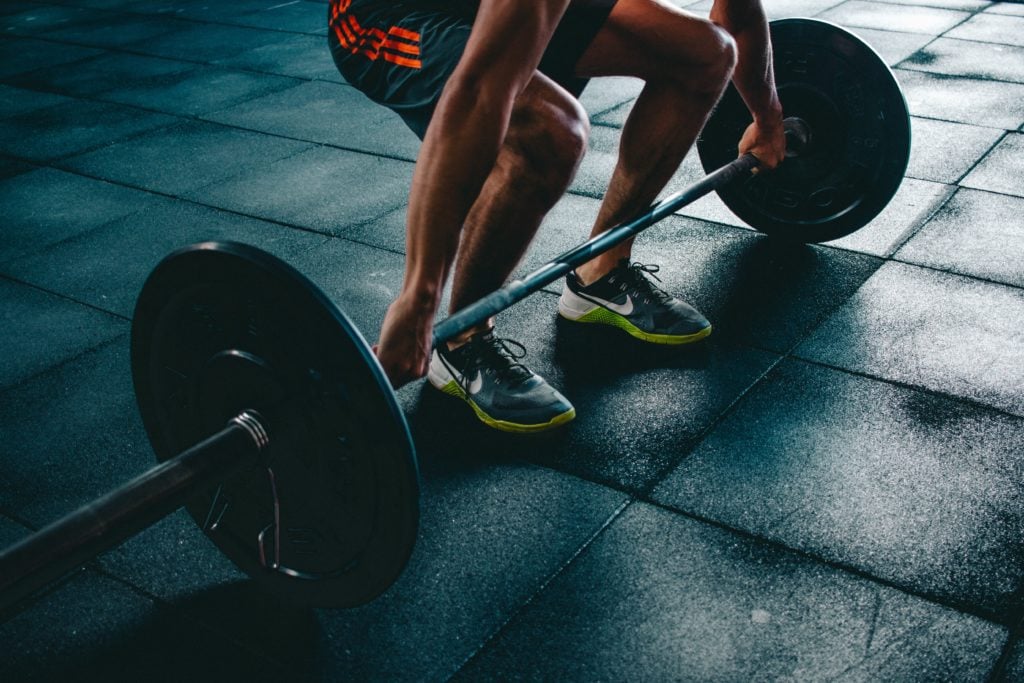
CBD has many potential exercise & sports benefits, particularly for recovery. Research suggests that CBD can help athletes by: (85)
- Speeding up muscle recovery and improving delayed-onset muscle soreness (DOMS) through its anti-inflammatory effects
- Relieving pain from overuse, injuries, and other causes
- Protecting against concussions and other forms of brain trauma, which is common in contact sports
- Supporting healthy sleep, which is needed for optimal recovery
- Supporting bone and cardiovascular health
- Easing muscle spasms (86)
- Reducing nausea and potentially other digestive issues, which can help with recovery
- Reducing performance anxiety
For example:
- A 2023 study found that topical CBD cream reduced pain in 20 retired professional athletes (87)
- A 2020 study found that CBD reduced DOMS following barbell squats in 23 people (88)
This helps explain why an increasing number of athletes are using CBD and publicly supporting it, including MMA fighters Nick Diaz and Bas Rutten, football star Rob Gronkowski, and basketball player Lamar Odom.
CBD and Obesity
CBD is not a magical weight loss pill, and you should be wary of anyone making outrageous claims about it. Having said that, some interesting early research suggests that CBD may reduce appetite and have other weight loss benefits.
Most notably, a 2022 review of 11 clinical studies concluded that CBD can reduce appetite and lead to weight loss (89). However, it’s important to keep in mind that most of the studies they looked at used large doses of pure CBD, which is unrealistic in the context of real-world CBD use.
It’s more realistic that CBD can help people lose weight indirectly through its positive effects on things like sleep, anxiety, mood, and stress.
CBD & Brown Fat
One 2016 petri dish study out of South Korea also reported interesting findings. The researchers applied CBD to mouse adipocytes (fat cells).
They found that CBD “browned” the cells, which means they took on the characteristics of brown fat cells, including increased lipolysis (breakdown of fat) and reduced lipogenesis (fat production) (90).
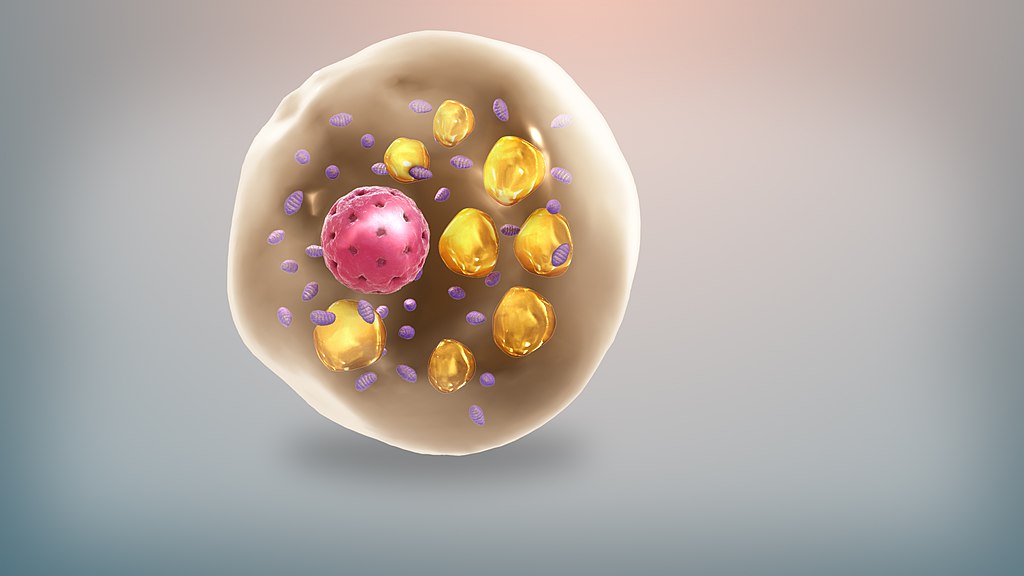
To give a quick overview, there are three types of fat tissue:
- White fat, the fat most of us are familiar with
- Brown fat, a special type of fat tissue that burns fatty acids to produce heat
- Beige fat, which is somewhere between the two
Brown fat is especially common in babies but is also present in some parts of the body in adults. Brown fat is currently being explored as a novel way to combat obesity.
The study’s researchers concluded that “CBD may be explored as a potentially promising therapeutic agent for the prevention of obesity.”
Multiple Sclerosis
Early research indicates that CBD may have beneficial effects on multiple sclerosis (MS).
Multiple studies in mice with autoimmune encephalomyelitis (EAE), a condition used as an animal model of MS, found that CBD improved the disease by reducing inflammation and suppressing or boosting certain immune cells’ activities (91, 92).
The researchers of one of these studies concluded that CBD “may constitute an excellent candidate for the treatment of MS and other autoimmune diseases” (93).
Another study found that CBD reduced inflammation in a viral model of MS (94).
Aside from that, several human studies have shown that Sativex — a drug that combines equal amounts of CBD and THC — can help with multiple symptoms of MS. One 2005 paper reviewed the results of five clinical trials of Sativex and found that it significantly improved neuropathic pain, spasticity, muscle spasms, and sleep disturbances in MS patients (95).
In summary, as concluded by a 2021 review paper, “…even based on the limited evidence so far available, CBD appears as a highly promising drug with significant immunomodulating and disease-modifying potential for MS.” (96)
Asthma
Given CBD’s potent anti-inflammatory and immunomodulatory effects, it’s not surprising that it might also be beneficial for asthma.
One Brazilian study in rats with asthma found that CBD reduced the levels of pro-inflammatory molecules called cytokines, which play a key role in the condition (97). Similarly, a study in mice with asthma found that CBD decreased airway inflammation and other signs of asthma (98).
Although human research is needed, these early findings suggest that CBD can be beneficial for asthma sufferers.
Bone Health
Recent research has shown that bone cells and the skeleton as a whole contain endocannabinoids, their enzymes, and cannabinoid receptors, suggesting that the ECS plays a role in bone health (99).
As such, CBD may have some bone benefits. For example, one 2015 study found that CBD promoted the healing of fractures in rats and improved bone strength (100). A similar 2023 study found that CBD and the minor cannabinoid CBG relieved pain and promoted bone healing in mice with bone fractures (101).
Meanwhile, a study on isolated cells found that CBD promoted osteoblast differentiation, the process through which stem cells from your bone marrow turn into osteoblasts, the cells that build new bone (102).
Similarly, other studies have found that CBD can help with bone healing and regeneration by affecting these stem cells (103, 104).
Although human studies are needed, these early findings suggest that CBD could help with osteoporosis, fractures, and other bone conditions characterized by loss of bone mass.
Covid-19
Recent years have seen some research into how CBD can help with COVID-19. Here are the most notable findings:
- A 2021 study of 120 frontline COVID-19 healthcare workers suffering from burnout and emotional exhaustion found that CBD plus standard care (motivational exercise videos, weekly psychiatrist meetings) improved the symptoms better than standard care alone (105)
- A 2021 petri dish study found that CBD reduces the breakdown of the anti-covid drug remdesivir, making it more effective (106)
- A 2022 petri dish study found that CBDa (the parent compound of CBD) and CBGa, another acidic cannabinoid, may block the covid-19 coronavirus from infecting human cells (107)
- A similar 2022 study reported that “CBD and its metabolite 7-OH-CBD can block SARS-CoV-2 infection at early and even later stages of infection.” (108)
More research is needed to see if the promising petri dish and animal findings translate to human studies.
Benefits for Pets
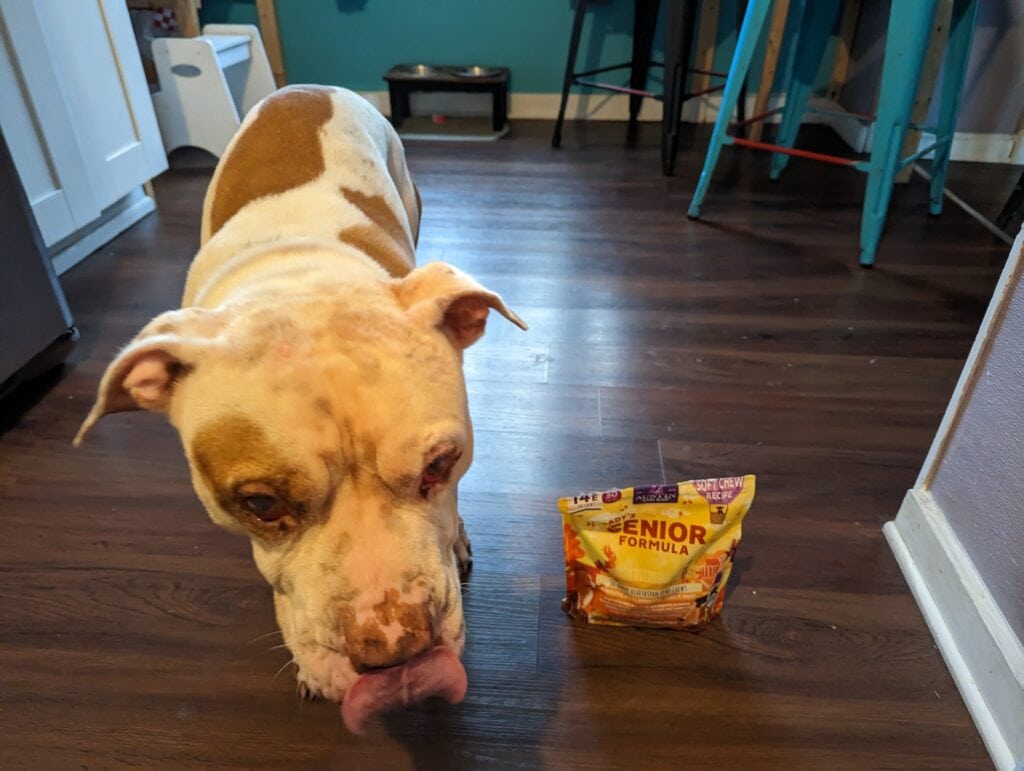
You may be surprised to learn that the endocannabinoid system is present in many other animals, including dogs and cats. In fact, this system is over 500 million years old and can even be found in birds, fish, and reptiles (109).
That means CBD can benefit both cats and dogs (110). They can suffer from many of the same issues we take CBD for, including anxiety, arthritis, pain, inflammation, skin, and digestive disorders.
Although research in this area is limited, early findings are promising. For example, a 2018 study found that CBD improved comfort and activity in dogs with osteoarthritis (111).
Having said that, cats and dogs require smaller doses than we do due to their smaller size and differences in their endocannabinoid system. That’s why many CBD companies offer dedicated products for pets.
Dogs, for example, have more cannabinoid receptors in the brain than we do, which makes them especially susceptible to the intoxicating effects of THC (112).
How Does CBD Work?
CBD works in two main ways:
- interacting with your body’s endocannabinoid system (ECS).
- Interacting with other parts of the body, including various receptors, enzymes, and proteins.
So far, researchers have identified over 76 different CBD “mechanisms” — ways that it interacts with and impacts the body (113). This helps explain why CBD seems to have so many wide-ranging effects and potential benefits.
First, let’s get a basic understanding of the endocannabinoid system since it plays a key role in the effects of CBD.
The Endocannabinoid System
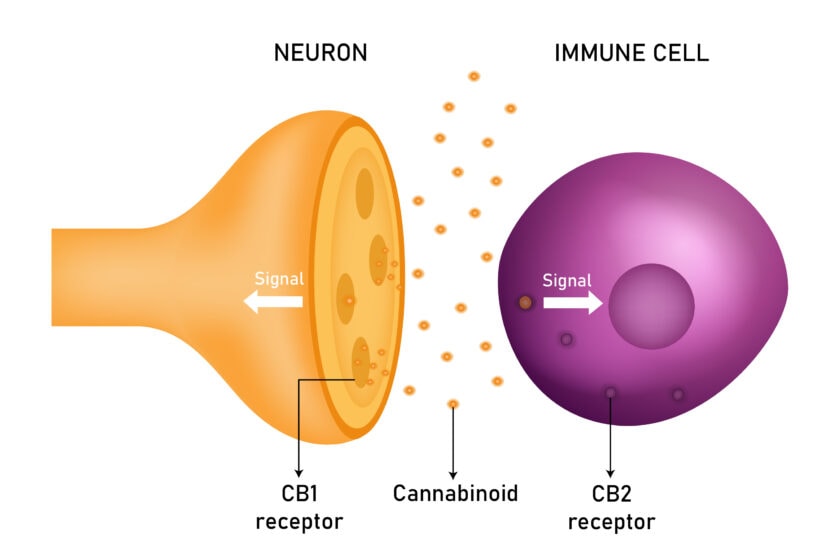
Discovered in the early 1990s, the endocannabinoid system (ECS) is a crucial biological system consisting of three parts: (114)
- Endocannabinoids: cannabinoids made in your body. The two main ones are called anandamide and 2-arachidonoylglycerol (2-AG).
- Enzymes: molecules that build and break down endocannabinoids. The two most important ones are FAAH (breaks down anandamide) and MAGL (breaks down 2-AG) (115).
- Cannabinoid receptors. Receptors are proteins found in cells that respond to specific compounds and produce a resulting effect. Cannabinoid receptors respond to both phytocannabinoids (plant-derived) and endocannabinoids (made in the body). You can think of them as locks that are only opened by the right key. The two main cannabinoid receptors are CB1 and CB2, but researchers believe there could be more (116). CB1 is abundant in the brain, while CB2 is common in immune system tissues (117).
The main role of the ECS is to maintain homeostasis — a term for a healthy state of balance. To do that, the ECS regulates virtually all of your body’s essential processes, including: (118)
- Memory, learning, and neuronal development
- Mood, stress, sleep, and emotions
- Metabolism, appetite, and digestion
- Cardiovascular, liver, and skin function
- Immunity and inflammation
- Pain
- Body temperature
- Reproduction
One simple way to understand the role of the ECS is to think of anxiety. We need to feel some anxiety to get things done. For example, anxiety about a job interview can motivate you to prepare for it.
But if we get too anxious, it can wreck our mental health. Clearly, we need some anxiety, but not too much. This same concept can apply to virtually every other process in our body.
The ECS helps keep these processes running just right — not too much and not too little. Whenever something upsets this delicate balance, like pain, inflammation, or anxiety, the ECS steps in to bring things back to homeostasis.
How CBD Affects the ECS
With that out of the way, how exactly does CBD interact with the endocannabinoid system? Unlike THC and your endocannabinoids, which directly bind to CB1 and CB2 receptors, CBD works a bit differently:
- CBD works as an allosteric modulator: a compound that increases or decreases how cannabinoid receptors to other cannabinoids. So far, there’s strong evidence that CBD is a negative allosteric modulator of the CB1 receptor and early evidence that it might also affect CB2 (119, 120).
- CBD increases the levels of the endocannabinoid anandamide, so you experience more of its beneficial effects, such as relief of pain, neuroinflammation, anxiety, and depression (5). Researchers believe this is either because CBD inhibits FAAH, the enzyme that breaks down anandamide, or binds to proteins that transport endocannabinoids (121).
Anandamide is known as the “bliss molecule” because it seems to reduce anxiety, relieve pain, and have other beneficial effects (122). It might also be one of the compounds responsible for the euphoric feeling you get after strenuous exercise, known as the “runner’s high” (123).
Endocannabinoid Deficiency
Clinical endocannabinoid deficiency (CEDC) is a theory that was proposed by esteemed cannabis researcher Dr. Ethan Russo in 2001.
This theory argues that insufficient endocannabinoid levels or other malfunctions of your endocannabinoid system are responsible for certain health conditions that have proven difficult to treat.
Research over the past two decades has found particularly strong evidence that CEDC may be responsible for migraines, fibromyalgia, and irritable bowel syndrome (IBS) (76).
How does this relate to CBD?
Since CBD can essentially “stimulate” your endocannabinoid system by increasing endocannabinoid levels, it may positively affect this deficiency and its associated conditions.
How CBD Affects Other Parts of the Body
CBD doesn’t just affect your endocannabinoid system. It also interacts with many other molecules in your body, including various neurotransmitter (brain messenger chemical) systems, a myriad of receptors, enzymes, and transporter proteins.
As previously highlighted, researchers have found 76 separate “molecular targets” of CBD (113). Here’s a closer look at the key ones:
- CBD interacts with several G-protein-coupled orphan receptors (GPRs), which are considered “orphans” because scientists have yet to find which of our body’s molecules are supposed to bind to them (5). That includes GPR55, the leading candidate for what may one day be called the third cannabinoid receptor (CB3).
- CBD interacts with several ion channels, including calcium, potassium, and Nav (sodium) channels (124). Its interaction with Nav channels is key to CBD’s anti-seizure effects.
- CBD interacts with the 5-HT1A serotonin receptor, which regulates stress, anxiety, vomiting, and other cognitive functions (5). This mechanism is involved in CBD’s anti-anxiety and anti-nausea effects. CBD also seems to interact with 5-HT2A and 5-HT3, two other kinds of serotonin receptors.
- CBD may interact with the a7 nicotinic receptor, another receptor involved in brain function (113).
- CBD interacts with the GABAA receptor, which is typically activated by GABA, the brain’s main calming neurotransmitter. This may produce anxiety-relieving and anticonvulsant effects (5).
- CBD interacts with glycine receptors, which are involved in motor control and pain perception (5). This mechanism may result in a reduction of neuropathic and inflammatory pain.
- CBD interacts with numerous TRP channels, which are involved in immune function, sensing temperature, pain, releasing neurotransmitters, and more (5).
- CBD is an allosteric modulator of opioid receptors, which might explain its beneficial effects on opioid addiction (125).
- CBD blocks protein equilibrative nucleoside transporter 1 (ENT-1), increasing brain levels of the calming neurotransmitter adenosine. This may contribute to CBD’s neuroprotective, anti-inflammatory, and other beneficial effects (126, 127). CBD may also directly activate the adenosine A1 receptor.
- CBD may inhibit nuclear factor (NF)-κB, a family of proteins whose dysfunction is linked to inflammation, cancer, and autoimmune disorders (128). It also appears to inhibit other pro-inflammatory pathways, including interferon (INF) beta and the NLRP3 inflammasome (124). As a result, CBD also suppresses the activity of several immune cells.
- CBD may suppress COX-1 and COX-2, two pro-inflammatory enzymes (124)
- CBD activates the peroxisome proliferator-activated receptor gamma (PPARγ) receptor. This interaction is at least partially responsible for CBD’s effects on memory, Alzheimer’s, Parkinson’s, multiple sclerosis, anxiety, depression, cardiovascular and immune health, and cancer (129).
- CBD interacts with the sigma-1 receptor, which may be linked to CBD’s positive effects on seizures, stroke, neurodegenerative disorders, and other conditions (130).
- CBD inhibits the activity of cytochrome P450 superfamily (CYPs) of enzymes. These enzymes metabolize about 80% of all clinical drugs, so high CBD doses can result in drug interactions (131, 132).
- CBD can promote apoptosis (controlled cell death) in cancer cells (124)
- CBD also inhibits some other enzymes, including AANAT, the enzyme that converts serotonin to melatonin, AChE and BChE, two enzymes that break down the neurotransmitter acetylcholine, and IDO, an enzyme that breaks down the essential amino acid tryptophan (5, 113).
Full-Spectrum vs. Broad-Spectrum vs. Isolate CBD
When shopping for CBD, you’ll encounter three kinds of CBD extract:
- Full-spectrum: Whole-plant hemp extract containing CBD plus many other cannabinoids, terpenes, flavonoids, and other natural compounds. This is considered the most effective form of CBD.
- Broad-spectrum: Same as full-spectrum but with THC removed (trace amounts may remain).
- CBD Isolate: Purified CBD without any other compounds; the least effective form of CBD.
It’s important to understand the differences between these types of CBD so you can choose the best one for your needs.
Full-Spectrum CBD
Simply put, full-spectrum CBD is a whole-plant hemp extract. As such, it contains all of the cannabinoids (including up to 0.3% THC) and terpenes naturally found in hemp, as well as flavonoids, fatty acids, minerals, and other phytochemicals (plant compounds).
Research suggests that all of these compounds (cannabinoids and terpenes in particular) work synergistically with each other, creating what scientists call the cannabis entourage effect (133). Thanks to this effect, full-spectrum CBD is believed to be much more effective than pure CBD on its own.
For example, research in epilepsy patients has shown that full-spectrum CBD may be up to four times more potent than pure CBD and cause fewer side effects (134).
Minor Cannabinoids
After CBD, the most important component of full-spectrum extracts are minor cannabinoids, which get their name for their relatively small concentrations (typically below 1% of the plant’s dry weight).
Cannabis (marijuana and hemp) plants can contain as many as 120 minor cannabinoids, with the most prominent ones being: (135)
Broad-Spectrum CBD
Broad-spectrum CBD is the same as full-spectrum except the THC has been removed to a point where it’s not detectable by lab tests (which means it’s as close to 0% as possible).
This type of whole-plant extract also benefits from the entourage effect. However, it’s slightly weaker since you’re not getting THC, which contributes some beneficial synergistic effects.
People typically choose broad-spectrum CBD products when they need to avoid THC due to:
- High THC sensitivity. Some people (like me, the person writing this guide) are extremely sensitive to the effects of THC, which means full-spectrum CBD can give them anxiety.
- Employee drug testing. In the US, it’s common to be tested for marijuana by your employer (although it’s becoming less frequent as using cannabis becomes more socially accepted). These tests look for the metabolites of THC, so if you take a full-spectrum CBD product, you can test positive.
CBD Isolate
As the name suggests, CBD isolate is pure CBD and nothing else. It comes in the form of an odorless, tasteless white powder and is made by isolating CBD from all other cannabinoids and hemp compounds. Isolate can be sold in its powder form or blended with other ingredients to make CBD oils, gummies, and other types of products.
CBD isolate does not benefit from the entourage effect since you’re not getting any other hemp phytochemicals. As such, it’s significantly less effective than full and broad-spectrum CBD.
People usually buy pure CBD isolate when they want to:
- Make their own DIY CBD oils and other products, or add the isolate to coffee, tea, and other beverages or foods
- Save money, because CBD isolate powder is arguably the most cost-effective way to use CBD
- Avoid THC (although broad-spectrum CBD is the better option)
CBD isolate usually contains over 99% CBD. However, it might also have tiny amounts of the minor cannabinoid CBDV because it has a similar molecular structure, so some CBDV can remain after refining (136).
Isolate also happens to be the most common form of CBD used in research studies because researchers prefer to study compounds in isolation.
A Word on Nano CBD
You might occasionally run into CBD products that mention “nano CBD” or “water-soluble CBD.” Such products are made using nanotechnology, which deals with things of a very small (nanometer) size.
Using nanotech for CBD is a great idea because it solves a key problem: low oral bioavailability. In simple terms, this means that CBD is poorly absorbed when you swallow it (as a capsule, gummy, or another oral product) because it’s a fat-soluble compound that doesn’t dissolve in water.
The most common approach is called nano-emulsification or nanoemulsion, where the CBD molecules are broken down into tiny sizes to allow them to disperse (but not mix) in water, greatly improving their absorption. Some companies use this technology to formulate their CBD oils and drinks.
Research suggests that nanotechnology can improve CBD’s absorption by severalfold (137). Having said that, more research is needed. Besides, it’s difficult for you to confirm that the nanotechnology used in a specific CBD product matches the methods used in studies.
Bottom line: For now, nano CBD is mostly a marketing tactic. Until there’s more solid evidence, don’t buy into any outrageous claims about nano CBD.
CBD Consumption Methods
There are multiple ways to take CBD. The four most common methods are:
- Sublingual: put CBD under your tongue
- Oral: ingest CBD
- Inhalation: smoke or vape CBD
- Topical: apply CBD to your skin
You could also spray CBD into your nose or use it as a suppository (rectum or vagina), but these administration routes are less common.
There isn’t one best method of introducing CBD into your body because they all have their advantages and disadvantages. Here’s a closer look at the differences between the four main options (138).
| Method | Bioavailability | Onset | Duration | Products |
| Sublingual | Medium (12-35%) | 15-40 min | 4-6 hours | CBD oil, spray, isolate |
| Oral | Low (6-24%) | 30-120 min | 6+ hours | CBD capsules, edibles, drinks |
| Inhalation | High (31-45%) | Seconds | 1-4 hours | CBD vape e-liquid, CBD hemp flower |
| Topical | Low (1-10%) | 10-60 min | 2+ hours | CBD cream, lotion, patches |
Sublingual CBD

The sublingual route is the most common and popular way of taking CBD. This is when you put the active ingredient (in this case, CBD) under your tongue to allow it to absorb directly into the blood vessels. After the CBD oil is held for at least 60 seconds, you can swallow it.
The sublingual method is preferred over taking CBD orally because it’s absorbed much more effectively. It’s also cost-effective, allows you to easily raise or lower the dosage easily, and has long-lasting effects.
Sublingual CBD takes about 15-40 minutes to be felt (139), and its effects last for about 4-6 hours.
Oral CBD
The oral method is when you swallow CBD, usually as capsules, softgels, gummies, or another edible product. This route isn’t as popular as CBD oil because CBD and other cannabinoids have notoriously low oral absorption (140).
In simple terms, when you ingest CBD, it must first go through the digestive tract and the liver before it can be absorbed into the blood: what’s called first-pass metabolism (141). Due to this, most of the CBD is lost before it reaches your bloodstream.
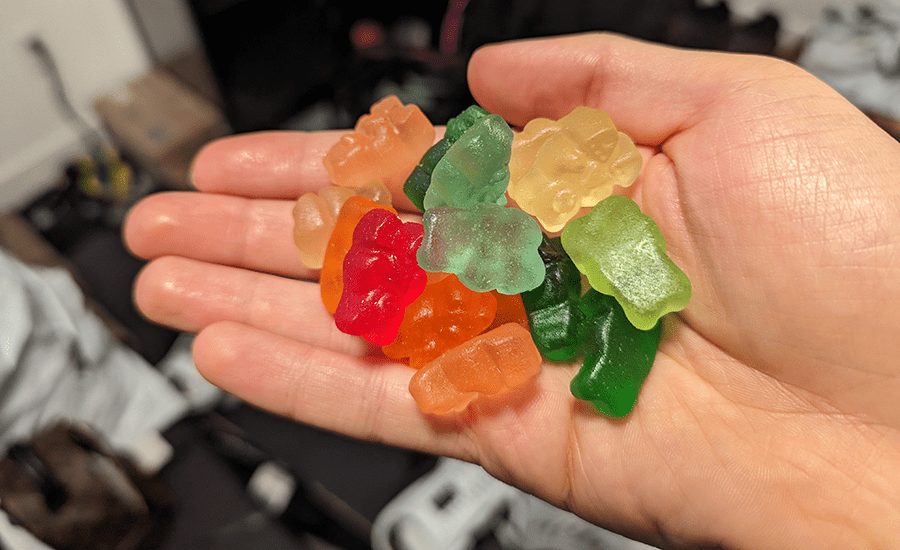
That’s why oral CBD has low bioavailability: anywhere from 6% to 24%, meaning over 70% is lost (142). Oral CBD can also take a long time to start working, depending on how much and when you eat.
On an empty stomach, it can work within 30 minutes, but if you’ve eaten, it can take upwards of two hours.
Nonetheless, many people prefer oral CBD products for their convenience. They’re easy to take, don’t require any measuring, and can be seamlessly incorporated into your daily supplement routine.
You can also take these products anytime and anywhere, and their effects tend to last the longest out of any CBD product: over six hours (143).
Inhaled CBD

Inhaling CBD through vaping or smoking dried CBD hemp flower is another popular method. The main advantage of inhaling CBD is that the effects are nearly instantaneous.
This means vaping/smoking is the best choice for people who need instant relief, like someone suffering from panic attacks. Research suggests that inhaling CBD via smoking or vaporizing has a bioavailability of about 31-45%, the highest out of the four main methods (138).
Inhaling CBD can also be more enjoyable than other methods. For example, if you vape, you also get to taste pleasant flavors and make clouds of vapor.
Having said that, the effects of inhaling CBD tend to last less: about 1-4 hours on average (143). Also, although vaping is considered much safer than smoking, there’s growing evidence that it carries some health risks. In particular, it may negatively affect lung and cardiovascular health (more on that in the safety section).
Topical CBD
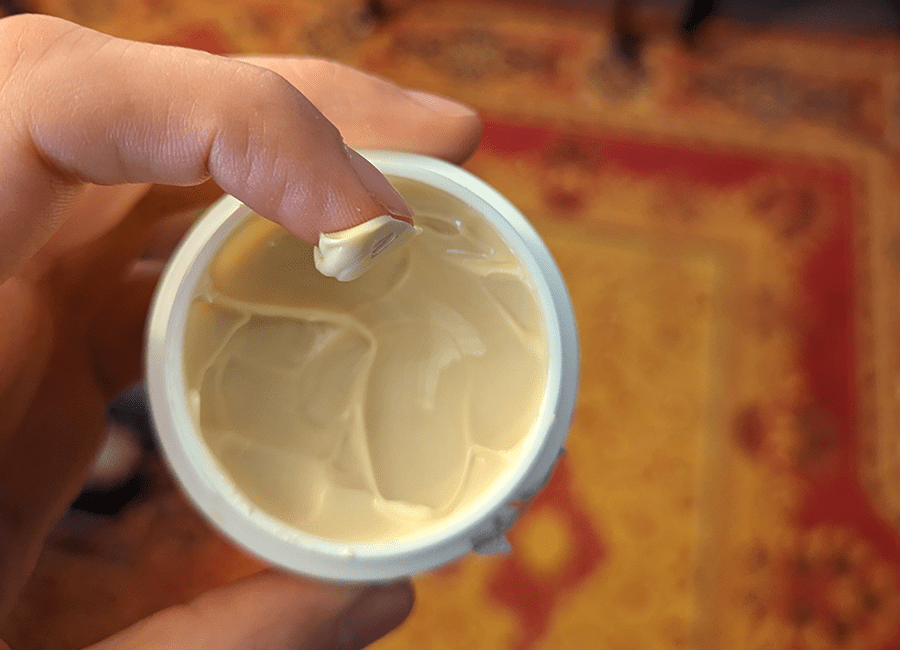
The final option is to apply CBD to your skin as a cream, lotion, balm oil, or another topical product. This method differs from the others because its effects are localized.
That means you will only get the benefits exactly where you applied the CBD, rather than your whole body. That’s because topically applied CBD doesn’t absorb well enough into the skin to reach the blood and only affects that area.
This makes topicals ideal for localized concerns such as skin conditions, muscle & joint pain, and soreness (140). Topically applied CBD takes about 10-60 minutes to start working, and its effects usually last at least a few hours.
Researchers are also developing transdermal formulations that allow CBD and other cannabinoids to pass through the skin and reach the blood vessels, providing the systemic (body-wide) effects you’d get from other methods (144).
Theoretically, these products can continuously deliver CBD into the blood for up to 48 hours with fewer side effects than other routes.
However, this technology is still in its infancy, and there’s no way to verify the effectiveness of any topical product that’s claimed to be transdermal.
How to Improve CBD Absorption
As a fat-soluble compound, CBD is not easy for our water-based bodies to absorb. Here are some evidence-based tips for maximizing CBD absorption and bioavailability:
- If you’re taking CBD sublingually, hold it for at least a minute, but ideally 3 minutes or even longer. The longer you hold it, the more CBD will be absorbed into the blood vessels.
- If you’re taking CBD orally, take it with a high-fat meal. Studies have shown that fats improve the oral bioavailability of cannabinoids. In one 2019 study of epilepsy patients, taking pure CBD capsules after eating a high-fat meal (burrito with 500-600 calories of fat) increased absorption fourfold from 6% (when fasted) to 24% (145). A 2018 RCT study in 12 healthy adults also reported a fourfold increase in CBD absorption with a high-fat meal (146). This tip is less important if you’re taking CBD as softgels, brownies, or other oral products that already contain fats, but you’re still likely to see greater absorption by eating a high-fat meal. This can even help CBD oil because some of the CBD will be absorbed orally after you swallow it.
- If you’re inhaling CBD by vaping or smoking, make sure you’re actually breathing it into your lungs and not immediately exhaling. Although there’s little research in this area, a good rule of thumb is to follow one of the two main smoking/vaping methods: direct-to-lung (directly inhaling into your lungs) or mouth-to-lung (inhale into the mouth first and again into the lungs).
- If you’re applying CBD topically, ensure your skin is dry and massage the product in to maximize absorption.
For more detailed information, check out our guide to improving CBD absorption.
Types of CBD Products
CBD comes in many different types of products. CBD oil is the best all-around option for most people, but there are many factors to consider, such as convenience, portability, bioavailability (absorption), and duration of effects.
CBD Oil

CBD oil is the most popular type of CBD product. You’ll also see it called a CBD tincture, although this term isn’t technically correct because tinctures are supposed to contain alcohol.
CBD oil is made by taking a CBD-rich hemp extract and dissolving it in what’s called a carrier oil — an oil-based ingredient that helps the body absorb CBD and makes it easier to dose.
The most common carrier oil is coconut-derived MCT oil, but others, such as hemp seed, grape seed, and olive oil, are also used.
CBD oils can contain pure CBD isolate or a CBD-rich, whole-plant extract (full or broad-spectrum). Some companies also add other active ingredients like turmeric for anti-inflammatory benefits or melatonin for sleep.
The standard way to use CBD oil is sublingual (holding it under the tongue). However, you can also apply CBD oil to your skin or add a few drops to foods and beverages, like your morning coffee.
CBD Capsules
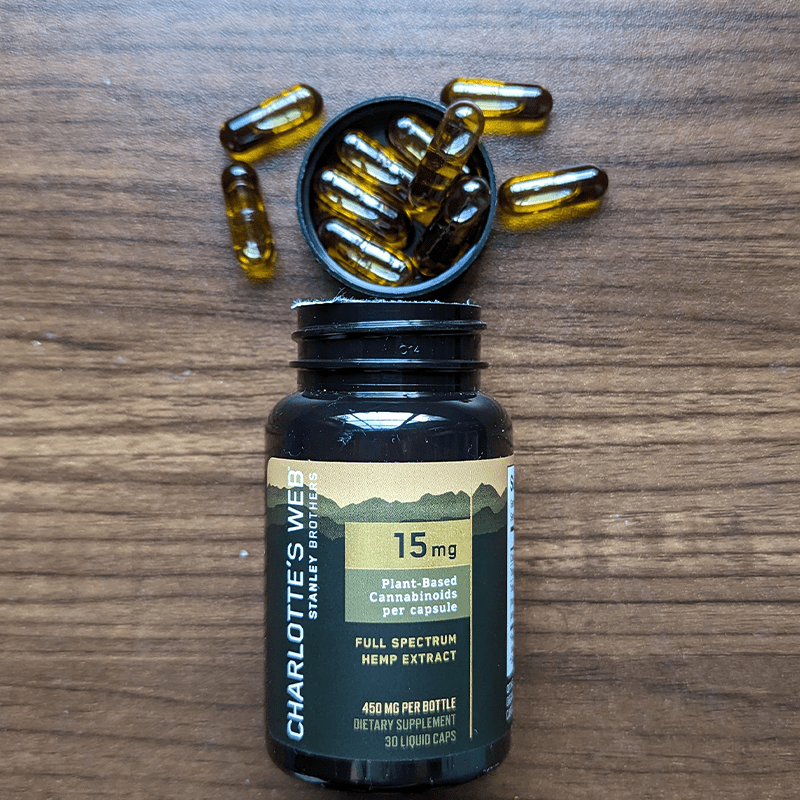
CBD capsules and softgels are another popular CBD product type. Like CBD oil, they can contain CBD isolate or whole-plant extract. Capsules are convenient, but, as we discussed earlier, they suffer from low absorption.
Capsules typically contain dry ingredients, whereas softgels contain CBD extract dissolved in a carrier oil, giving them greater absorption. Learn more about the differences between CBD capsules and softgels.
CBD Gummies and Other Edibles
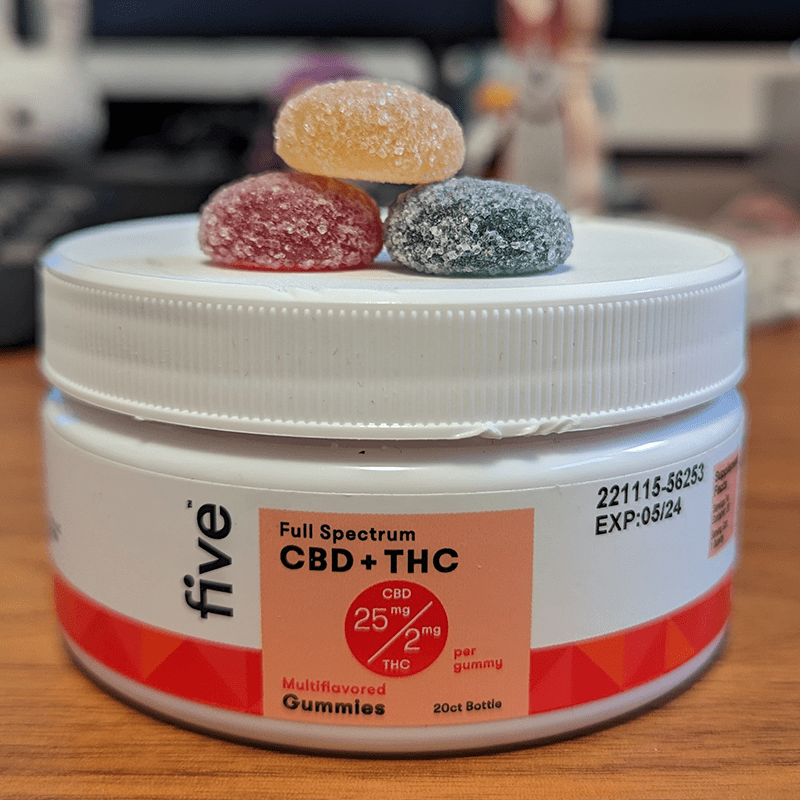
CBD gummies are the tastiest way to get the benefits of CBD. You can also find CBD-infused chocolate, cookies, candy, and other edible products. Again, like capsules, their major downside is poor oral absorption.
Also, virtually all gummies and most other CBD edibles are made with isolate because it’s difficult to formulate full-spectrum hemp extracts into an edible product. That’s yet another reason why CBD edibles are less potent than oils.
CBD Vape Products
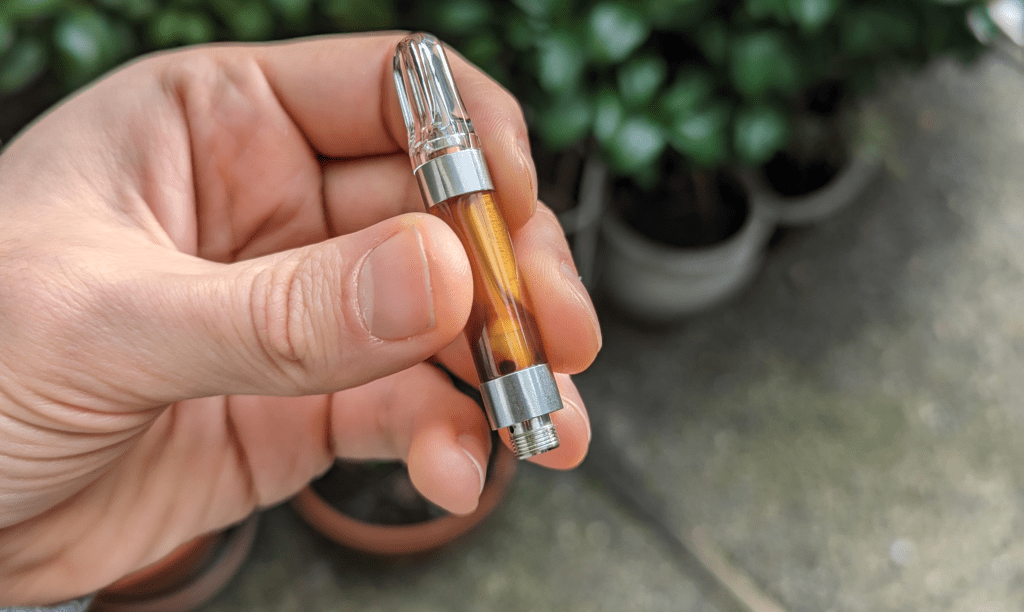
CBD vape e-liquids, pre-filled cartridges, and disposable vape pens give you the option to vape CBD.
Most CBD vape products contain CBD isolate dissolved in a standard vape ingredient base of vegetable glycerin (VG) and propylene glycol (PG). Some also use MCT oil, or a new type of vape carrier called Tec Temper as the carrier base.
You can also find products that add specific blends of cannabis terpenes or even use whole-plant hemp extracts instead of pure CBD.
If you want to get the most out of vaping CBD, you should buy your own vape device since disposable CBD vape pens are more expensive and tend to have low potency.
However, there are some safety concerns with vaping (more on that later).
CBD Topicals

Topical CBD products are applied to the skin and come in various options, including creams, balms, salves, lotions, massage oils, cleansers, and serums. You’ll find as much variety here as regular cosmetic and skincare products.
CBD Transdermal Patches
Considered a subset of topical products, transdermal patches are also applied to your skin. However, the difference is that they’re supposed to penetrate through the skin into the blood, which should result in long-lasting, systemic rather than localized effects.
CBD Isolates & Concentrates

This category includes 99% pure CBD isolate powder, terpene-infused isolates, CBD paste, and CBD versions of cannabis concentrates like shatter, wax, and rosin.
You can use these products by putting them under the tongue, adding them to foods or drinks, vaping/smoking them, or making DIY CBD oils, vape juice, and other preparations.
Concentrates like CBD shatter and wax can also be dabbed.
CBD Drinks
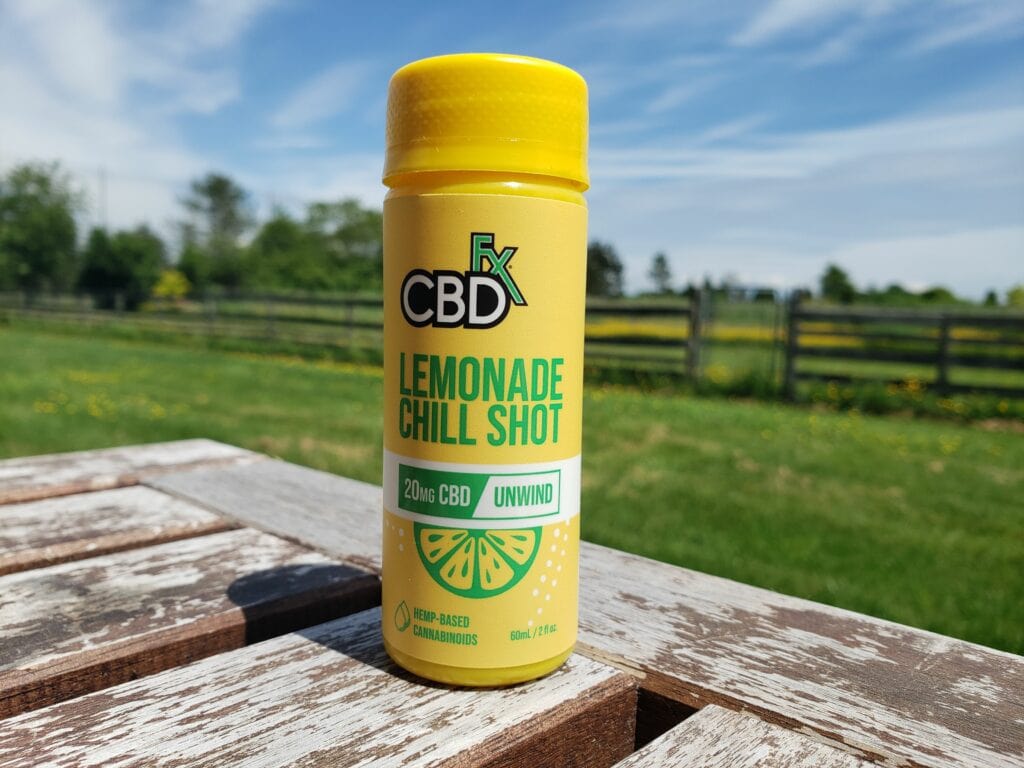
CBD-infused beverages come in many forms, including CBD coffee, tea, water, sodas, juice, sports drinks, and even alcoholic beverages.
Since these products are absorbed orally, in the same manner as capsules and gummies, their effects will not be as potent as CBD oil. Many CBD beverages are made with nanotechnology because CBD and water naturally don’t mix.
This allows the CBD to at least disperse in the water so it’s easier to absorb.
CBD Bath Bombs
CBD-infused bath bombs are not the most efficient way to use CBD because it doesn’t dissolve in water and will be too diluted in the large volume of a typical bath. So you’re unlikely to feel much from the CBD in bath bombs. It may be a better option to stick to regular (non-CBD) bath bombs.
CBD Gum
CBD gum is unique because it’s technically edible but may be absorbed as effectively as CBD oil by reaching the blood vessels in the cheeks, gums, and under the tongue.
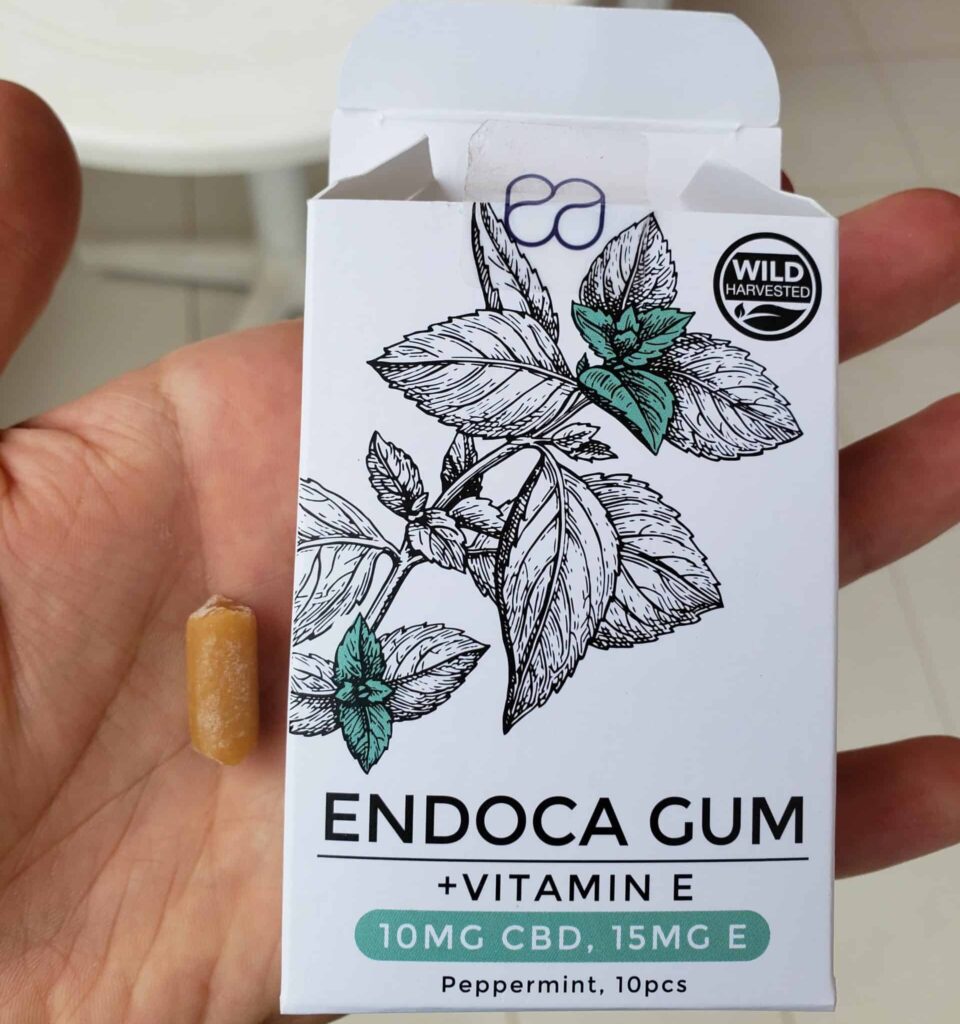
How Are CBD Products Made?
All CBD products start out as hemp. After being harvested, the plant’s aerial (above-ground) parts are extracted with a solvent such as CO2 or ethanol to produce a whole-plant, CBD-rich extract (147).
Hemp flowers are usually the main part of the plant used to make CBD products because they’re rich in hair-like trichomes, which hold most of the cannabinoids and terpenes. However, the stalks, stems, and leaves of hemp can be used as well.
The resulting whole-plant, CBD-rich hemp extract contains not only cannabinoids but many beneficial compounds, including terpenes, flavonoids, vitamins, minerals, and fatty acids.
This extract can then be further refined to produce full-spectrum, broad-spectrum, or isolate CBD.
Finally, the CBD extract is blended with other ingredients depending on the specific type of product. For example, if you’re making a CBD oil, the extract is dissolved in a carrier oil such as MCT oil.
CBD Extraction Methods
There are two main ways to extract CBD and other beneficial compounds from hemp: alcohol (ethanol) and CO2 (carbon dioxide) extraction.
Both of these methods are perfectly safe and effective and are used by most CBD companies. Another less common option is called lipid infusion, where hemp is soaked in oil and heated to infuse the oil with cannabinoids.
CBD Dosage
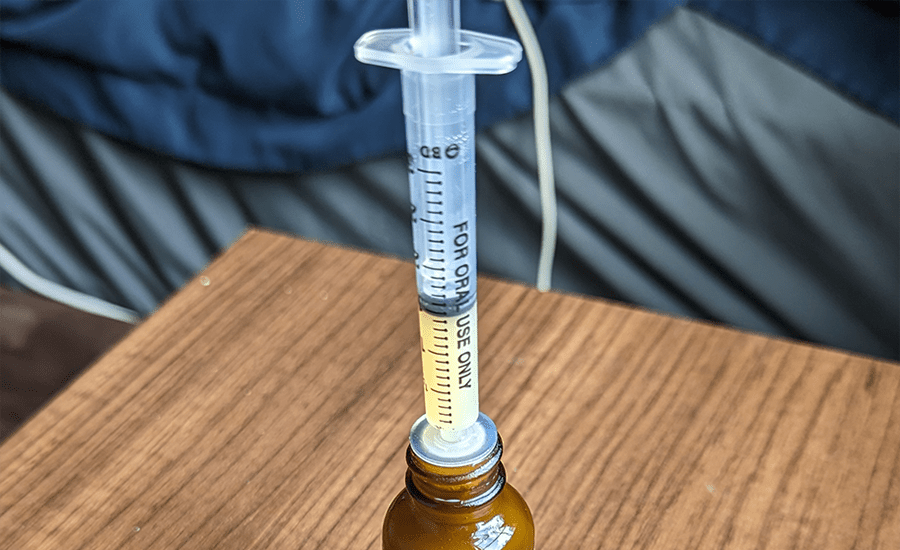
The right amount of CBD varies from person to person, and there’s no official health expert consensus or recommendation.
Dosage can be influenced by many variables, including:
- Body weight
- Genetics
- The type and severity of your symptoms
- The CBD concentration of your product
- The method you’re using to introduce CBD into your body
- The type of extract used in your product
That’s why a dose that works for someone could be completely insufficient for another person. Here’s a closer look at each of these variables.
Body Weight
Generally speaking, people who weigh more will need to take higher CBD doses to feel the same effect as smaller individuals.
Body Chemistry and Genetics
Everyone’s body chemistry is different, which can influence how CBD affects us. The best example of this is genetic differences in your endocannabinoid system.
For example, some people have a genetic variation that reduces the activity of the enzyme that breaks down the endocannabinoid anandamide. As a result, these individuals have naturally higher anandamide levels, which may contribute to lower overall anxiety (148).
Since CBD also works by suppressing this enzyme, it’s possible that people with this genetic variation could be less responsive to CBD’s effects.
There are also many variations of the genes responsible for your cannabinoid receptors, which can also affect how your body responds to cannabinoids.
On top of that, genes can also influence your metabolism, affecting how specific drugs (such as CBD) will affect you (149).
The bottom line is that your unique body chemistry can make you less or more responsive to the effects of CBD.
Your Symptoms
The type and severity of the symptoms you’re attempting to deal with will also affect the dosage. Someone looking to reduce occasional anxiety will likely require lower CBD dosages than a person looking for relief from chronic pain caused by cancer or another debilitating condition.
CBD Extract Type
As discussed earlier, full and broad-spectrum CBD extracts are more effective than pure CBD isolate. As a result, products made with these whole-plant extracts will likely require lower doses than those made with isolate (by a factor of about four) (134).
CBD Delivery Method
How you’re taking CBD also matters. Most importantly, if you’re taking an oral CBD product, you can expect weaker effects than the sublingual or inhaled routes, especially if you take it on an empty stomach.
That means you’ll need to eat fat-rich foods and/or up your dose when taking CBD capsules, gummies, and other ingestible products to get the same effects as CBD oil or vape juice.
CBD Concentration/Potency
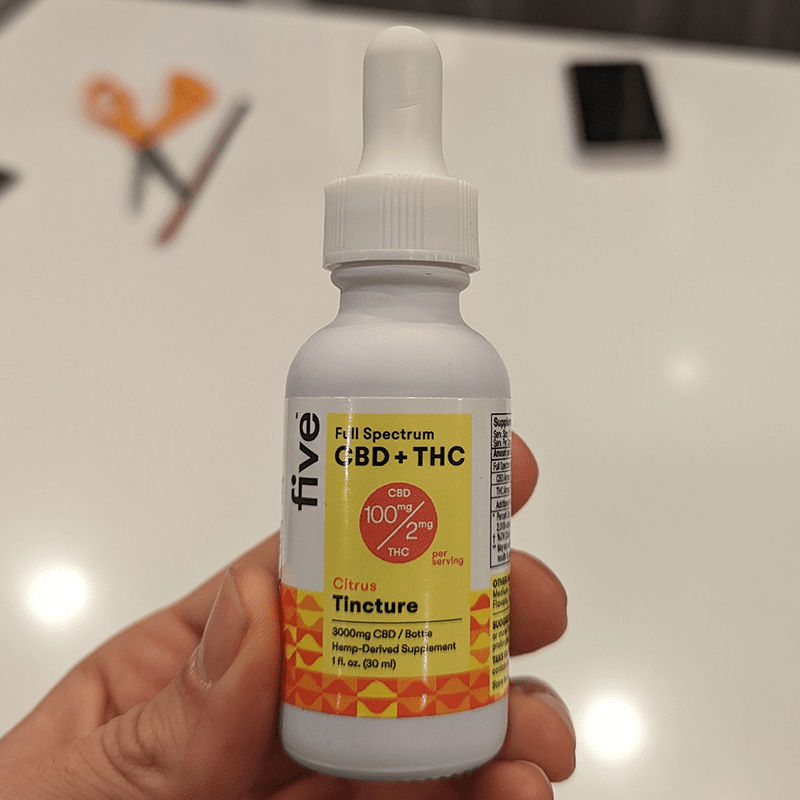
You also need to be aware of the concentration of your CBD product when choosing your dosage.
Also known as the potency or strength, this refers to the concentration of CBD in a product, which can be measured in CBD per ml, capsule, gummy, whole container, and so on.
For example, the CBD oil above has a 100 mg/ml potency, which means one full dropper will provide 100 mg of CBD.
As another example, let’s say you have two 30 ml CBD oils.
One contains 900 mg of CBD, while the other has 300 mg. If we divide this total amount by the volume (30 ml), we arrive at a potency of 30 mg of CBD per ml for the first oil and only 10 mg/ml for the second one. The second oil will obviously be much weaker.
As a general rule of thumb, CBD products can be divided into three potency levels:
- Low: 1-15 mg/ml
- Medium: 16-40 mg/ml
- High: 50+ mg/ml
The potency will usually be listed on the product. If it isn’t, simply divide the total amount of CBD by the volume.
How Much CBD Should You Take?
As we can see, many factors can affect your CBD dosage. That’s why researchers recommend following the “start low and go slow” method to dosing cannabinoids (150).
Here’s what you do: start with a small CBD dose (10-15 mg) and see how it makes you feel. If you don’t notice any effects, you can take a bigger amount either a few hours later or take the same dose for a few days before increasing it.
Use this method to incrementally increase your dosage, making sure to stop and wait to see if you feel any effects. Continue to do this until you find the CBD amount that gives you the desired effects and stick to it.
Generally, the average person takes about 20-120 mg of CBD per day in one or two doses. Some people also find that they need to take CBD for a few days or even weeks before they notice an effect.
CBD Safety
According to decades of research, CBD is a remarkably safe substance. It’s so safe, in fact, that the World Health Organization (WHO) concluded in its 2018 report that “CBD is generally well tolerated with a good safety profile” (151).
However, there are still some safety-related concerns to be aware of, such as possible side effects and interactions with prescription medications.
Side Effects
Human studies have reported that CBD can cause minor-to-moderate side effects, including: (152)
- Fatigue/tiredness
- Sleepiness/drowsiness
- Diarrhea
- Dry mouth
- Low blood pressure
- Lightheadedness
- Changes in appetite/weight
Having said that, these side effects have only been reported in studies using very high oral doses of pure CBD (300 mg and higher).
This isn’t a realistic representation of how CBD is taken since most people use:
- CBD oil instead of capsules and other oral products
- Full and broad-spectrum products rather than CBD isolate
In short, your chances of experiencing side effects from CBD are low, and even if you do get them, they’re likely to be relatively small.
CBD Drug Interactions
As we noted earlier, CBD can also affect two types of molecules that help your body metabolize a wide variety of drugs: (131)
- The CYP450 family of liver enzymes
- The P-glycoprotein transport protein
The CYP450 enzymes metabolize about 80% of all prescription medications, which means high doses of CBD can increase (or in some cases decrease) the effects of many prescription drugs (132).
For example, a 2021 study found that CBD may increase the levels of the SSRI antidepressant citalopram (Celexa) (153).
The full list of affected drugs includes blood thinners, antidepressants, muscle relaxants, anti-epilepsy drugs, cancer drugs, antipsychotics, and many other drugs (154).
Similarly, P-glycoprotein is involved in metabolizing many drugs, including antivirals, immunosuppressants, and chemotherapy medications (155).
The good news is that CBD drug interactions are unlikely to occur unless you’re taking high doses. Still, it’s best to talk to your doctor before using CBD if you’re taking any prescription medications.
Side Effects of Full-Spectrum CBD Products
There is one other thing to keep in mind in terms of CBD side effects. As we discussed earlier, a minority of people are highly sensitive to the effects of THC.
That means it’s theoretically possible to get high and feel anxiety, paranoia, and other unwanted mind-altering effects from taking a sufficiently high dose of a full-spectrum CBD product.
If you’re one of these THC-sensitive individuals, consider lowering your dose or switching to broad-spectrum CBD for anxiety.
Safety of Vaping CBD
Although CBD itself is quite safe, vaping does carry some health risks. Any vaping, regardless of whether it includes nicotine, CBD, or just pure VG and PG, may have a detrimental effect on your health.
There has been growing research in this area, with key studies suggesting that:
- Vape products can produce toxic chemicals (156)
- Vaping can increase your risk of heart attack and other cardiovascular and lung conditions (157)
- Vaping can contribute to coughing, wheezing, and asthma (158)
- In rare cases that involve specific chemicals, vaping can cause e-cigarette or vaping use-associated lung injury (EVALI), which led to thousands of hospitalizations and dozens of deaths in 2019 and 2020 (159)
Is CBD Safe for Your Liver?
One recent study of mice caused quite an uproar by making it seem like CBD is toxic to your liver and can cause liver injury (160). This study has been a talking point for the FDA’s negative stance towards CBD.
The problem with this study is that it administered ridiculously large doses of CBD to mice; doses that would be equivalent to adult humans taking grams of CBD at a time.
Meanwhile, a 2023 observational study of 839 American adults who were using commercial CBD products for at least 30 days found that they did not cause elevations in liver enzymes. The researchers concluded that:
Self-medication of CBD does not appear to be associated with an increased prevalence of LT elevation and most of the LT elevations are likely due to the conditions/medications for which the individuals are taking CBD.
(161)
CBD and Drug Tests
Many people are concerned about passing employee drug tests while using CBD products.
These tests look for the presence of THC in your body. Since full-spectrum CBD products contain small amounts of THC (0.3% or less), they can result in a positive drug test.
That’s why people who undergo drug testing should opt for broad-spectrum or isolate CBD products, which are free of THC.
To reiterate, CBD itself is not detected by marijuana drug tests. It’s only when you take full-spectrum products containing THC that there’s a chance of failing a test.
Choosing the Right CBD Brand
The CBD industry is not heavily regulated, so plenty of low-quality products exist. You certainly don’t want to buy CBD from the gas station.
Choosing a reputable CBD brand will take some research. Here are the main factors and tips to consider.
Look for Third-Party Tested Companies
The CBD industry is completely unregulated, so there isn’t much stopping companies from selling low-quality products. That said, third-party testing is the best way to protect yourself.
An independent lab performs these tests to determine whether a product contains as much CBD and other cannabinoids as advertised. They can also look for the presence of pesticides, heavy metals, and other contaminants.
Third-party testing is the best way to ensure you get a safe and effective CBD product.
Any CBD company worth its salt is expected to pay for third-party testing and make the results of these tests (called Certificates of Analysis, CoAs) available on its website.
If the test results are missing, this is a major red flag.
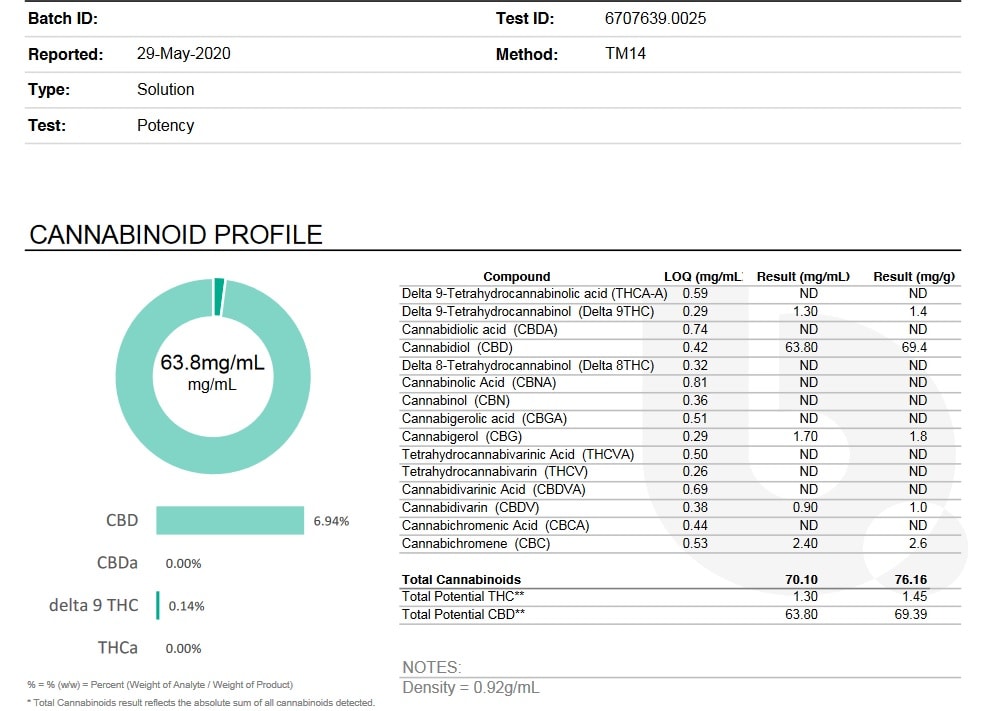
Check The Hemp Source
Since CBD is extracted from hemp, the way the plants are grown also plays a role in product quality.
The best CBD products are derived from organic American hemp, with Colorado and Kentucky being the most popular states for growing hemp for CBD extraction.
European countries such as the Netherlands are also great places to source hemp due to the continent’s rich history of hemp cultivation.
It’s even better if you find a company that:
- Is vertically integrated, which means it does everything from growing the hemp to making the finished CBD products instead of sourcing them from someone else
- Has U.S. Hemp Authority certification, a third-party program that certifies that hemp producers follow strict quality standards
- Has USDA Organic certification for its hemp source. Keep in mind that the USDA organic seal is different. It means that both the hemp and most of the other ingredients (and production processes) used in a CBD product are also USDA-organic. So it’s much more difficult to get.
Again, all this information should be easy to find on the company’s website.
Read Customer Reviews
Customer reviews are a great way to check if a CBD company can be trusted.
You can read reviews directly on the company’s website and independent sources like Trustpilot and Reddit, where the chances of fake or sponsored reviews are low. You can also check independent review websites (like us here at CBDthinker).
It’s always a good idea to research and compare different review sources to ensure you’re getting multiple viewpoints and opinions.
Look for Transparency
Trustworthy CBD companies have nothing to hide. They explain how their products are made, where the hemp is sourced, and post easily accessible, up-to-date third-party tests.
Transparent brands also provide as much extra information as possible, like when the company was founded, by whom, and product details. Finally, reputable companies have excellent customer service. They respond to your questions promptly and provide helpful answers.
Did you know? It’s better to shop for CBD online vs. at a store because:
- You can check third-party test results
- Convenient and often cheaper
- You can check the company’s customer reviews and other helpful details
- You can compare different brands
- Wider variety of products
Choosing the Right CBD Product
After you find a reputable CBD company, you still need to choose a product that fits your needs. Here are the key factors for you to keep in mind:
- Choose the consumption method: If you want the best overall effects, go with full-spectrum CBD oil. If you want convenience, go with capsules or gummies. If you want immediate effects, vaping is your best bet. Finally, topical products work best for localized skin or muscle/joint concerns.
- Choose the type of CBD: If you want to get the most benefits out of CBD, opt for full-spectrum products. If you want to avoid THC, choose broad-spectrum products. We don’t recommend using CBD isolate products because they’re much less effective unless you want to buy isolate in bulk and make your own DIY tinctures and other preparations.
- Choose the potency: If you’re new to CBD, start out with a product that provides about 10-20 mg of CBD per dose. If you’re a more seasoned user and know which dosage works best for you, find a product that matches that. Generally speaking, the more severe your issue, the higher the CBD potency you’ll need to find relief.
- Consider how long you need the product to last: How often and how much CBD will you be using? This will determine how big of a bottle/how many capsules/gummies you need to buy. Let’s say you plan on taking 30 mg of CBD daily and want your CBD oil to last a month. That means you should look for one that contains at least 900 mg of CBD in total.
CBD FAQs
Sources
- Morales, Paula, Dow P. Hurst, and Patricia H. Reggio. “Molecular targets of the phytocannabinoids: a complex picture.” Phytocannabinoids: Unraveling the complex Chemistry and Pharmacology of Cannabis sativa (2017): 103-131.
- Piomelli, Daniele, and Ethan B. Russo. “The Cannabis sativa versus Cannabis indica debate: an interview with Ethan Russo, MD.” Cannabis and cannabinoid research 1.1 (2016): 44-46.
- Small, Ernest. “Evolution and classification of Cannabis sativa (marijuana, hemp) in relation to human utilization.” The botanical review 81 (2015): 189-294.
- Ebersbach, Paul, et al. “Chemical fingerprinting of single glandular trichomes of Cannabis sativa by Coherent anti-Stokes Raman scattering (CARS) microscopy.” BMC plant biology 18.1 (2018): 1-12.
- Castillo-Arellano, Jorge, et al. “The Polypharmacological Effects of Cannabidiol.” Molecules 28.7 (2023): 3271.
- Olivas-Aguirre, Miguel, et al. “Cannabidiol on the Path from the Lab to the Cancer Patient: Opportunities and Challenges.” Pharmaceuticals 15.3 (2022): 366.
- Marquez, Agostina B., et al. “Broad-Spectrum Antiviral Effect of Cannabidiol Against Enveloped and Nonenveloped Viruses.” Cannabis and Cannabinoid Research (2023).
- Nichols, James M., and Barbara LF Kaplan. “Immune responses regulated by cannabidiol.” Cannabis and cannabinoid research 5.1 (2020): 12-31.
- https://www.fda.gov/news-events/press-announcements/fda-approves-new-indication-drug-containing-active-ingredient-derived-cannabis-treat-seizures-rare
- Stockings, Emily, et al. “Evidence for cannabis and cannabinoids for epilepsy: a systematic review of controlled and observational evidence.” Journal of Neurology, Neurosurgery & Psychiatry 89.7 (2018): 741-753.
- Talwar, Ashna, et al. “Clinical efficacy and safety of cannabidiol for pediatric refractory epilepsy indications: A systematic review and meta-analysis.” Experimental Neurology (2022): 114238.
- Bergamaschi, Mateus M., et al. “Cannabidiol reduces the anxiety induced by simulated public speaking in treatment-naive social phobia patients.” Neuropsychopharmacology 36.6 (2011): 1219-1226.
- Masataka, Nobuo. “Anxiolytic effects of repeated cannabidiol treatment in teenagers with social anxiety disorders.” Frontiers in psychology 10 (2019): 2466.
- Berger, Maximus, et al. “Cannabidiol for treatment-resistant anxiety disorders in young people: an open-label trial.” The Journal of Clinical Psychiatry 83.5 (2022): 42111.
- Dahlgren, Mary Kathryn, et al. “Clinical and cognitive improvement following full-spectrum, high-cannabidiol treatment for anxiety: open-label data from a two-stage, phase 2 clinical trial.” Communications Medicine 2.1 (2022): 139.
- Stack, Sophie K., et al. “The Effectiveness and Adverse Events of Cannabidiol and Tetrahydrocannabinol Used in the Treatment of Anxiety Disorders in a PTSD Subpopulation: An Interim Analysis of an Observational Study.” Journal of Pharmacy Technology (2023): 87551225231180796.
- Elms, Lucas, et al. “Cannabidiol in the treatment of post-traumatic stress disorder: a case series.” The Journal of Alternative and Complementary Medicine 25.4 (2019): 392-397.
- Skelley, Jessica W., et al. “Use of cannabidiol in anxiety and anxiety-related disorders.” Journal of the American Pharmacists Association 60.1 (2020): 253-261.
- Silote, Gabriela Pandini, et al. “Emerging evidence for the antidepressant effect of cannabidiol and the underlying molecular mechanisms.” Journal of chemical neuroanatomy 98 (2019): 104-116.
- Solowij, Nadia, et al. “Therapeutic effects of prolonged cannabidiol treatment on psychological symptoms and cognitive function in regular cannabis users: a pragmatic open-label clinical trial.” Cannabis and cannabinoid research 3.1 (2018): 21-34.
- Pinto, Jairo Vinícius, et al. “Cannabidiol in the Treatment of Mood Disorders.” Current Treatment Options in Psychiatry 9.3 (2022): 140-150.
- Russo, Ethan B. “History of cannabis and its preparations in saga, science, and sobriquet.” Chemistry & biodiversity 4.8 (2007): 1614-1648.
- Henson, Jeremy D., Luis Vitetta, and Sean Hall. “Tetrahydrocannabinol and cannabidiol medicines for chronic pain and mental health conditions.” Inflammopharmacology 30.4 (2022): 1167-1178.
- Capano, Alex, Richard Weaver, and Elisa Burkman. “Evaluation of the effects of CBD hemp extract on opioid use and quality of life indicators in chronic pain patients: a prospective cohort study.” Postgraduate medicine 132.1 (2020): 56-61.
- Xu, Dixon H., et al. “The effectiveness of topical cannabidiol oil in symptomatic relief of peripheral neuropathy of the lower extremities.” Current pharmaceutical biotechnology 21.5 (2020): 390-402.
- Gulbransen, Graham, William Xu, and Bruce Arroll. “Cannabidiol prescription in clinical practice: an audit on the first 400 patients in New Zealand.” BJGP open 4.1 (2020).
- Highet, Bridget H., et al. “Tetrahydrocannabinol and cannabidiol use in an outpatient palliative medicine population.” American Journal of Hospice and Palliative Medicine® 37.8 (2020): 589-593.
- Schilling, Jan M., et al. “Cannabidiol as a treatment for chronic pain: a survey of patients’ perspectives and attitudes.” Journal of pain research (2021): 1241-1250.
- Boehnke, Kevin F., et al. “Cannabidiol use for fibromyalgia: prevalence of use and perceptions of effectiveness in a large online survey.” The journal of pain 22.5 (2021): 556-566.
- Silva-Cardoso, Gleice Kelli, and Christie Ramos Andrade Leite-Panissi. “Chronic Pain and Cannabidiol in Animal Models: Behavioral Pharmacology and Future Perspectives.” Cannabis and Cannabinoid Research 8.2 (2023): 241-253.
- McDonagh, Marian S., et al. “Cannabis-based products for chronic pain: A systematic review.” Annals of internal medicine 175.8 (2022): 1143-1153.
- Heineman, John T., et al. “A randomized controlled trial of topical cannabidiol for the treatment of thumb basal joint arthritis.” The Journal of hand surgery 47.7 (2022): 611-620.
- Frane, Nicholas, et al. “Cannabidiol as a treatment for arthritis and joint pain: an exploratory cross-sectional study.” Journal of Cannabis Research 4.1 (2022): 47.
- Saleska, Jessica Londeree, et al. “The Safety and Comparative Effectiveness of Non-Psychoactive Cannabinoid Formulations for the Improvement of Sleep: A Double-Blinded, Randomized Controlled Trial.” Journal of the American Nutrition Association (2023): 1-11.
- Wang, Michael, et al. “A Cannabidiol/Terpene Formulation That Increases Restorative Sleep in Insomniacs: A Double-Blind, Placebo-controlled, Randomized, Crossover Pilot Study.” medRxiv (2023): 2023-06.
- Barchel, Dana, et al. “Oral cannabidiol use in children with autism spectrum disorder to treat related symptoms and co-morbidities.” Frontiers in pharmacology 9 (2019): 1521.
- de Almeida, Carlos MO, et al. “Cannabidiol for rapid eye movement sleep behavior disorder.” Movement Disorders 36.7 (2021): 1711-1715.
- Ranum, Rylea M., et al. “Use of Cannabidiol in the Management of Insomnia: a systematic review.” Cannabis and Cannabinoid Research 8.2 (2023): 213-229.
- Chagas, Marcos Hortes N., et al. “Effects of cannabidiol in the treatment of patients with Parkinson’s disease: an exploratory double-blind trial.” Journal of Psychopharmacology 28.11 (2014): 1088-1098.
- Zuardi, Antonio Waldo, et al. “Cannabidiol for the treatment of psychosis in Parkinson’s disease.” Journal of Psychopharmacology 23.8 (2009): 979-983.
- Broers, Barbara, et al. “Prescription of a THC/CBD-based medication to patients with dementia: a pilot study in Geneva.” Medical Cannabis and Cannabinoids 2.1 (2019): 56-59.
- Bloomfield, Michael AP, et al. “The effects of acute cannabidiol on cerebral blood flow and its relationship to memory: An arterial spin labelling magnetic resonance imaging study.” Journal of Psychopharmacology 34.9 (2020): 981-989.
- Tambe, Srushti M., et al. “Neuroprotective potential of cannabidiol: Molecular mechanisms and clinical implications.” Journal of Integrative Medicine (2023).
- Jadoon, Khalid A., Garry D. Tan, and Saoirse E. O’Sullivan. “A single dose of cannabidiol reduces blood pressure in healthy volunteers in a randomized crossover study.” JCI insight 2.12 (2017).
- Dragun, Tanja, et al. “The Influence of Oral Cannabidiol on 24-h Ambulatory Blood Pressure and Arterial Stiffness in Untreated Hypertension: A Double-Blind, Placebo-Controlled, Cross-Over Pilot Study.” Advances in Therapy (2023): 1-17.
- Rajesh, Mohanraj, et al. “Cannabidiol attenuates high glucose-induced endothelial cell inflammatory response and barrier disruption.” American Journal of Physiology-Heart and Circulatory Physiology 293.1 (2007): H610-H619.
- Rajesh, Mohanraj, et al. “Cannabidiol attenuates cardiac dysfunction, oxidative stress, fibrosis, and inflammatory and cell death signaling pathways in diabetic cardiomyopathy.” Journal of the American College of Cardiology 56.25 (2010): 2115-2125.
- Sultan, Salahaden R., et al. “A systematic review and meta-analysis of the haemodynamic effects of cannabidiol.” Frontiers in pharmacology 8 (2017): 81.
- Durst, Ronen, et al. “Cannabidiol, a nonpsychoactive Cannabis constituent, protects against myocardial ischemic reperfusion injury.” American Journal of Physiology-Heart and Circulatory Physiology (2007).
- Kicman, Aleksandra, and Marek Toczek. “The effects of cannabidiol, a non-intoxicating compound of cannabis, on the cardiovascular system in health and disease.” International journal of molecular sciences 21.18 (2020): 6740.
- Tóth, Kinga Fanni, et al. “Cannabinoid Signaling in the Skin: Therapeutic Potential of the “C (ut) annabinoid” System.” Molecules 24.5 (2019): 918.
- Stella, Alessandro, et al. “A therapeutic effect of cbd-enriched ointment in inflammatory skin diseases and cutaneous scars.” La Clinica Terapeutica 170.2 (2019): e93-e99.
- Maghfour, Jalal, et al. “Assessing the effects of topical cannabidiol in patients with atopic dermatitis.” Dermatology online journal 27.2 (2021).
- Umpreecha, Chalapinyo, et al. “Efficacy and safety of topical 0.1% cannabidiol for managing recurrent aphthous ulcers: a randomized controlled trial.” BMC Complementary Medicine and Therapies 23.1 (2023): 1-11.
- Few, Julius, et al. “A single-center study evaluating the effects of a novel retinol and cannabidiol combination topical on facial skin.” Aesthetic Surgery Journal Open Forum. Vol. 4. US: Oxford University Press, 2022.
- Ferreira, Beatriz P., et al. “Skin applications of cannabidiol: sources, effects, delivery systems, marketed formulations and safety.” Phytochemistry Reviews (2023): 1-48.
- Irving, Peter M., et al. “A randomized, double-blind, placebo-controlled, parallel-group, pilot study of cannabidiol-rich botanical extract in the symptomatic treatment of ulcerative colitis.” Inflammatory bowel diseases 24.4 (2018): 714-724.
- Naftali, Timna, et al. “Oral CBD-rich cannabis induces clinical but not endoscopic response in patients with Crohn’s disease, a randomised controlled trial.” Journal of Crohn’s and Colitis 15.11 (2021): 1799-1806.
- Mack, Alison, and Janet Joy. “MARIJUANA AND CANCER.” Marijuana as Medicine? The Science Beyond the Controversy. National Academies Press (US), 2000.
- Johnson, Jeremy R., et al. “Multicenter, double-blind, randomized, placebo-controlled, parallel-group study of the efficacy, safety, and tolerability of THC: CBD extract and THC extract in patients with intractable cancer-related pain.” Journal of pain and symptom management 39.2 (2010): 167-179.
- Heider, Camren G., et al. “Mechanisms of cannabidiol (CBD) in cancer treatment: A review.” Biology 11.6 (2022): 817.
- Morgan, Celia JA, et al. “Cannabidiol reduces cigarette consumption in tobacco smokers: preliminary findings.” Addictive behaviors 38.9 (2013): 2433-2436.
- Hindocha, Chandni, et al. “Cannabidiol reverses attentional bias to cigarette cues in a human experimental model of tobacco withdrawal.” Addiction 113.9 (2018): 1696-1705.
- Gournay, L. Riley, et al. “Cannabidiol Reduces Nicotine Withdrawal Severity and State Anxiety During an Acute E-cigarette Abstinence Period: A Novel, Open-Label Study.” Cannabis and Cannabinoid Research (2023).
- Morgan, Celia JA, et al. “Cannabidiol attenuates the appetitive effects of Δ9-tetrahydrocannabinol in humans smoking their chosen cannabis.” Neuropsychopharmacology 35.9 (2010): 1879-1885.
- Cleirec, Grégoire, et al. “Efficiency of inhaled cannabidiol in cannabis use disorder: the pilot study Cannavap.” Frontiers in Psychiatry 13 (2022): 899221.
- Hurd, Yasmin L., et al. “Cannabidiol for the reduction of cue-induced craving and anxiety in drug-abstinent individuals with heroin use disorder: a double-blind randomized placebo-controlled trial.” American Journal of Psychiatry 176.11 (2019): 911-922.
- Karoly, H. C., et al. “THC and CBD effects on alcohol use among alcohol and cannabis co-users.” Psychology of Addictive Behaviors 35.6 (2021): 749.
- Hurd, Yasmin L. “Cannabidiol: swinging the marijuana pendulum from ‘weed’to medication to treat the opioid epidemic.” Trends in Neurosciences 40.3 (2017): 124-127.
- Afshar, Shima, et al. “A Phase I Randomized, Double-blind, Placebo-controlled Study on Efficacy and Safety Profile of a Sublingually Administered Cannabidiol/Delta 9-tetrahydrocannabidiol (10: 1) Regimen in Diabetes Type 2 Patients.” Iranian Journal of Pharmaceutical Research: IJPR 21.1 (2022).
- Zheng, Ting, et al. “A randomized, controlled trial of efficacy and safety of cannabidiol in idiopathic and diabetic Gastroparesis.” Clinical Gastroenterology and Hepatology (2023).
- Weiss, L., et al. “Cannabidiol lowers incidence of diabetes in non-obese diabetic mice.” Autoimmunity 39.2 (2006): 143-151.
- Zhang, Jin, et al. “The pharmacology and therapeutic role of cannabidiol in diabetes.” Exploration. 2023.
- Zhang, Jin, et al. “The pharmacology and therapeutic role of cannabidiol in diabetes.” Exploration. 2023.
- Greco, Rosaria, et al. “Characterization of the biochemical and behavioral effects of cannabidiol: implications for migraine.” The journal of headache and pain 24.1 (2023): 1-15.
- Russo, Ethan B. “Clinical endocannabinoid deficiency reconsidered: current research supports the theory in migraine, fibromyalgia, irritable bowel, and other treatment-resistant syndromes.” Cannabis and cannabinoid research 1.1 (2016): 154-165.
- Leweke, F. M., et al. “Cannabidiol enhances anandamide signaling and alleviates psychotic symptoms of schizophrenia.” Translational psychiatry 2.3 (2012): e94-e94.
- McGuire, Philip, et al. “Cannabidiol (CBD) as an adjunctive therapy in schizophrenia: a multicenter randomized controlled trial.” American Journal of Psychiatry 175.3 (2018): 225-231.
- Bartoli, Francesco, et al. “Efficacy of cannabidiol for δ-9-tetrahydrocannabinol-induced psychotic symptoms, schizophrenia, and cannabis use disorders: a narrative review.” Journal of Clinical Medicine 10.6 (2021): 1303.
- Fleury-Teixeira, Paulo, et al. “Effects of CBD-enriched cannabis sativa extract on autism spectrum disorder symptoms: an observational study of 18 participants undergoing compassionate use.” Frontiers in neurology 10 (2019): 1145.
- Aran, Adi, et al. “Brief report: cannabidiol-rich cannabis in children with autism spectrum disorder and severe behavioral problems—a retrospective feasibility study.” Journal of Autism and Developmental Disorders 49.3 (2019): 1284-1288.
- Bar-Lev Schleider, Lihi, et al. “Real life experience of medical cannabis treatment in autism: analysis of safety and efficacy.” Scientific reports 9.1 (2019): 1-7.
- da Silva Junior, Estácio Amaro, et al. “Evaluation of the efficacy and safety of cannabidiol-rich cannabis extract in children with autism spectrum disorder: randomized, double-blind and placebo-controlled clinical trial.” Trends in Psychiatry and Psychotherapy AheadOfPrint (2022): 0-0.
- Mazza, Jeanne Alves de Souza, et al. “Severe and moderate autism spectrum disorder: serial cases treated with combined usage of Cannabidiol and Tetrahydrocannabinol, in a university hospital.” Arquivos de Neuro-Psiquiatria 80 (2022): S1-S96.
- McCartney, Danielle, et al. “Cannabidiol and sports performance: a narrative review of relevant evidence and recommendations for future research.” Sports Medicine-Open 6 (2020): 1-18.
- Nitecka-Buchta, Aleksandra, et al. “Myorelaxant effect of transdermal cannabidiol application in patients with TMD: a randomized, double-blind trial.” Journal of clinical medicine 8.11 (2019): 1886.
- Hall, Nicole, et al. “Topical cannabidiol is well tolerated in individuals with a history of elite physical performance and chronic lower extremity pain.” Journal of Cannabis Research 5.1 (2023): 11.
- Hatchett, Andrew, et al. “The influence cannabidiol on delayed onset of muscle soreness.” Int. J. Phys. Educ. Sports Health 7 (2020): 89-94.
- Pinto, Joaquim S., and Fátima Martel. “Effects of cannabidiol on appetite and body weight: A systematic review.” Clinical Drug Investigation 42.11 (2022): 909-919.
- Parray, Hilal Ahmad, and Jong Won Yun. “Cannabidiol promotes browning in 3T3-L1 adipocytes.” Molecular and cellular biochemistry 416 (2016): 131-139.
- Kozela, Ewa, et al. “Cannabidiol inhibits pathogenic T cells, decreases spinal microglial activation and ameliorates multiple sclerosis‐like disease in C57BL/6 mice.” British journal of pharmacology 163.7 (2011): 1507-1519.
- Giacoppo, Sabrina, et al. “Target regulation of PI3K/Akt/mTOR pathway by cannabidiol in treatment of experimental multiple sclerosis.” Fitoterapia 116 (2017): 77-84.
- Elliott, David M., et al. “Cannabidiol attenuates experimental autoimmune encephalomyelitis model of multiple sclerosis through induction of myeloid-derived suppressor cells.” Frontiers in immunology (2018): 1782.
- Mecha, Miriam, et al. “Cannabidiol provides long-lasting protection against the deleterious effects of inflammation in a viral model of multiple sclerosis: a role for A2A receptors.” Neurobiology of disease 59 (2013): 141-150.
- Perras, Christine. “Sativex for the management of multiple sclerosis symptoms.” Issues in emerging health technologies 72 (2005): 1-4.
- Furgiuele, Alessia, et al. “Immunomodulatory potential of cannabidiol in multiple sclerosis: A systematic review.” Journal of Neuroimmune Pharmacology 16 (2021): 251-269.
- Vuolo, Francieli, et al. “Evaluation of serum cytokines levels and the role of cannabidiol treatment in animal model of asthma.” Mediators of inflammation 2015 (2015).
- Vuolo, Francieli, et al. “Cannabidiol reduces airway inflammation and fibrosis in experimental allergic asthma.” European journal of pharmacology 843 (2019): 251-259.
- I Idris, Aymen. “Cannabinoid receptors as target for treatment of osteoporosis: a tale of two therapies.” Current neuropharmacology 8.3 (2010): 243-253.
- Kogan, Natalya M., et al. “Cannabidiol, a major non‐psychotropic cannabis constituent enhances fracture healing and stimulates lysyl hydroxylase activity in osteoblasts.” Journal of Bone and Mineral Research 30.10 (2015): 1905-1913.
- Khajuria, Deepak Kumar, et al. “Cannabidiol and cannabigerol, non‐psychotropic cannabinoids, as analgesics that effectively manage bone fracture pain and promote healing in mice.” Journal of Bone and Mineral Research (2023).
- Kang, Mi‐Ae, Jongsung Lee, and See‐Hyoung Park. “Cannabidiol induces osteoblast differentiation via angiopoietin1 and p38 MAPK.” Environmental toxicology 35.12 (2020): 1318-1325.
- Schmuhl, Ellen, et al. “Increase of mesenchymal stem cell migration by cannabidiol via activation of p42/44 MAPK.” Biochemical pharmacology 87.3 (2014): 489-501.
- Kamali, Amir, et al. “Cannabidiol-loaded microspheres incorporated into osteoconductive scaffold enhance mesenchymal stem cell recruitment and regeneration of critical-sized bone defects.” Materials Science and Engineering: C 101 (2019): 64-75.
- Crippa, José Alexandre S., et al. “Efficacy and safety of cannabidiol plus standard care vs standard care alone for the treatment of emotional exhaustion and burnout among frontline health care workers during the COVID-19 pandemic: a randomized clinical trial.” JAMA network open 4.8 (2021): e2120603-e2120603.
- Saraswat, Aishwarya, et al. “Cannabidiol inhibits in vitro human liver microsomal metabolism of remdesivir: a promising adjuvant for COVID-19 treatment.” Cannabis and Cannabinoid Research (2021).
- van Breemen, Richard B., et al. “Cannabinoids block cellular entry of SARS-CoV-2 and the emerging variants.” Journal of natural products 85.1 (2022): 176-184.
- Nguyen, Long Chi, et al. “Cannabidiol inhibits SARS-CoV-2 replication through induction of the host ER stress and innate immune responses.” Science Advances 8.8 (2022): eabi6110.
- McPartland, John M., et al. “Evolutionary origins of the endocannabinoid system.” Gene 370 (2006): 64-74.
- Corsato Alvarenga, Isabella, et al. “Scientific validation of cannabidiol for management of dog and cat diseases.” Annual Review of Animal Biosciences 11 (2023): 227-246.
- Gamble, Lauri-Jo, et al. “Pharmacokinetics, safety, and clinical efficacy of cannabidiol treatment in osteoarthritic dogs.” Frontiers in veterinary science (2018): 165.
- Gyles, Carlton. “Marijuana for pets?.” The Canadian Veterinary Journal 57.12 (2016): 1215.
- Mlost, Jakub, Marta Bryk, and Katarzyna Starowicz. “Cannabidiol for pain treatment: focus on pharmacology and mechanism of action.” International journal of molecular sciences 21.22 (2020): 8870.
- Zou, Shenglong, and Ujendra Kumar. “Cannabinoid receptors and the endocannabinoid system: signaling and function in the central nervous system.” International journal of molecular sciences 19.3 (2018): 833.
- Basavarajappa, Balapal S. “Critical enzymes involved in endocannabinoid metabolism.” Protein and peptide letters 14.3 (2007): 237-246.
- Ryberg, E., et al. “The orphan receptor GPR55 is a novel cannabinoid receptor.” British journal of pharmacology 152.7 (2007): 1092-1101.
- Turcotte, Caroline, et al. “The CB 2 receptor and its role as a regulator of inflammation.” Cellular and Molecular Life Sciences 73 (2016): 4449-4470.
- Aizpurua-Olaizola, Oier, et al. “Targeting the endocannabinoid system: future therapeutic strategies.” Drug discovery today 22.1 (2017): 105-110.
- Chung, Hery, Angélica Fierro, and C. David Pessoa-Mahana. “Cannabidiol binding and negative allosteric modulation at the cannabinoid type 1 receptor in the presence of delta-9-tetrahydrocannabinol: An In Silico study.” PloS one 14.7 (2019): e0220025.
- Martínez-Pinilla, Eva, et al. “Binding and signaling studies disclose a potential allosteric site for cannabidiol in cannabinoid CB2 receptors.” Frontiers in pharmacology 8 (2017): 744.
- Elmes, Matthew W., et al. “Fatty acid-binding proteins (FABPs) are intracellular carriers for Δ9-tetrahydrocannabinol (THC) and cannabidiol (CBD).” Journal of Biological Chemistry 290.14 (2015): 8711-8721.
- Scherma, Maria, et al. “Brain activity of anandamide: a rewarding bliss?.” Acta Pharmacologica Sinica 40.3 (2019): 309-323.
- Siebers, Michael, et al. “Exercise-induced euphoria and anxiolysis do not depend on endogenous opioids in humans.” Psychoneuroendocrinology 126 (2021): 105173.
- Martinez Naya, Nadia, et al. “Molecular and Cellular Mechanisms of Action of Cannabidiol.” Molecules 28.16 (2023): 5980.
- Kathmann, Markus, et al. “Cannabidiol is an allosteric modulator at mu-and delta-opioid receptors.” Naunyn-Schmiedeberg’s archives of pharmacology 372 (2006): 354-361.
- Maroon, Joseph, and Jeff Bost. “Review of the neurological benefits of phytocannabinoids.” Surgical neurology international 9 (2018).
- Stollenwerk, Todd M., Samantha Pollock, and Cecilia J. Hillard. “Contribution of the adenosine 2A receptor to behavioral effects of tetrahydrocannabinol, cannabidiol and PECS-101.” Molecules 26.17 (2021): 5354.
- Kozela, Ewa, et al. “Cannabinoids Δ9-tetrahydrocannabinol and cannabidiol differentially inhibit the lipopolysaccharide-activated NF-κB and interferon-β/STAT proinflammatory pathways in BV-2 microglial cells.” Journal of biological chemistry 285.3 (2010): 1616-1626.
- Khosropoor, Sara, et al. “Cannabidiol goes nuclear: The role of PPARγ.” Phytomedicine (2023): 154771.
- Rodríguez-Muñoz, María, et al. “Cannabidiol enhances morphine antinociception, diminishes NMDA-mediated seizures and reduces stroke damage via the sigma 1 receptor.” Molecular brain 11.1 (2018): 1-12.
- Iffland, Kerstin, and Franjo Grotenhermen. “An update on safety and side effects of cannabidiol: a review of clinical data and relevant animal studies.” Cannabis and cannabinoid research 2.1 (2017): 139-154.
- Zhao, Mingzhe, et al. “Cytochrome P450 enzymes and drug metabolism in humans.” International journal of molecular sciences 22.23 (2021): 12808.
- Russo, Ethan B. “The case for the entourage effect and conventional breeding of clinical cannabis: no “strain,” no gain.” Frontiers in plant science 9 (2019): 1969.
- Pamplona, Fabricio A., Lorenzo Rolim Da Silva, and Ana Carolina Coan. “Potential clinical benefits of CBD-rich cannabis extracts over purified CBD in treatment-resistant epilepsy: observational data meta-analysis.” Frontiers in neurology 9 (2018): 759.
- Walsh, Kenneth B., Amanda E. McKinney, and Andrea E. Holmes. “Minor cannabinoids: biosynthesis, molecular pharmacology and potential therapeutic uses.” Frontiers in Pharmacology 12 (2021): 777804.
- Citti, Cinzia, et al. “Analysis of impurities of cannabidiol from hemp. Isolation, characterization and synthesis of cannabidibutol, the novel cannabidiol butyl analog.” Journal of Pharmaceutical and Biomedical Analysis 175 (2019): 112752.
- Assadpour, Elham, et al. “Cannabidiol-Loaded Nanocarriers and Their Therapeutic Applications.” Pharmaceuticals 16.4 (2023): 487.
- Hossain, Khondker Rufaka, Amani Alghalayini, and Stella M. Valenzuela. “Current Challenges and Opportunities for Improved Cannabidiol Solubility.” International Journal of Molecular Sciences 24.19 (2023): 14514.
- Russo, Ethan B. “Cannabinoids in the management of difficult to treat pain.” Therapeutics and clinical risk management 4.1 (2008): 245-259.
- Bruni, Natascia, et al. “Cannabinoid delivery systems for pain and inflammation treatment.” Molecules 23.10 (2018): 2478.
- Herman, T. F., and C. Santos. “First Pass Effect [M]. StatPearls. Treasure Island (FL).” (2022).
- Perucca, Emilio, and Meir Bialer. “Critical aspects affecting cannabidiol oral bioavailability and metabolic elimination, and related clinical implications.” CNS drugs 34 (2020): 795-800.
- Borodovsky, Jacob T., et al. “Smoking, vaping, eating: Is legalization impacting the way people use cannabis?.” International Journal of Drug Policy 36 (2016): 141-147.
- Huestis, Marilyn A. “Human cannabinoid pharmacokinetics.” Chemistry & biodiversity 4.8 (2007): 1770.
- Birnbaum, Angela K., et al. “Food effect on pharmacokinetics of cannabidiol oral capsules in adult patients with refractory epilepsy.” Epilepsia 60.8 (2019): 1586-1592.
- Taylor, Lesley, et al. “A phase I, randomized, double-blind, placebo-controlled, single ascending dose, multiple dose, and food effect trial of the safety, tolerability and pharmacokinetics of highly purified cannabidiol in healthy subjects.” CNS drugs 32 (2018): 1053-1067.
- Cather, Jennifer Clay, and J. Christian Cather. “Cannabidiol primer for healthcare professionals.” Baylor University Medical Center Proceedings. Vol. 33. No. 3. Taylor & Francis, 2020.
- Dincheva, Iva, et al. “FAAH genetic variation enhances fronto-amygdala function in mouse and human.” Nature communications 6.1 (2015): 6395.
- Nemoto, N. “Individual difference in drug metabolism–pharmacogenetical approach.” Gan to kagaku ryoho. Cancer & chemotherapy 9.5 (1982): 757-765.
- Lucas, Catherine J., Peter Galettis, and Jennifer Schneider. “The pharmacokinetics and the pharmacodynamics of cannabinoids.” British journal of clinical pharmacology 84.11 (2018): 2477-2482.
- https://www.who.int/docs/default-source/controlled-substances/whocbdreportmay2018-2.pdf?sfvrsn=f78db177_2
- Huestis, Marilyn A., et al. “Cannabidiol adverse effects and toxicity.” Current neuropharmacology 17.10 (2019): 974-989.
- Anderson, Lyndsey L., et al. “Citalopram and cannabidiol: in vitro and in vivo evidence of pharmacokinetic interactions relevant to the treatment of anxiety disorders in young people.” Journal of clinical psychopharmacology 41.5 (2021): 525-533.
- https://medlineplus.gov/druginfo/natural/1439.html
- Zhu, Hao-Jie, et al. “Characterization of P-glycoprotein inhibition by major cannabinoids from marijuana.” Journal of Pharmacology and Experimental Therapeutics 317.2 (2006): 850-857.
- Ogunwale, Mumiye A., et al. “Aldehyde detection in electronic cigarette aerosols.” ACS omega 2.3 (2017): 1207-1214.
- Peruzzi, Mariangela, et al. “Vaping cardiovascular health risks: an updated umbrella review.” Current emergency and hospital medicine reports 8 (2020): 103-109.
- https://nap.nationalacademies.org/resource/24952/012318ecigaretteConclusionsbyEvidence.pdf
- https://www.cdc.gov/tobacco/basic_information/e-cigarettes/severe-lung-disease.html
- Ewing, Laura E., et al. “Hepatotoxicity of a cannabidiol-rich cannabis extract in the mouse model.” Molecules 24.9 (2019): 1694.
- Kaufmann, Robert, et al. “Observed impact of long-term consumption of oral cannabidiol on liver function in healthy adults.” Cannabis and Cannabinoid Research 8.1 (2023): 148-154.
- Consroe, Paul, Kurt Kennedy, and Karl Schram. “Assay of plasma cannabidiol by capillary gas chromatography/ion trap mass spectroscopy following high-dose repeated daily oral administration in humans.” Pharmacology Biochemistry and Behavior 40.3 (1991): 517-522.
- Millar, Sophie A., et al. “A systematic review on the pharmacokinetics of cannabidiol in humans.” Frontiers in pharmacology 9 (2018): 1365.
- Hariton, Eduardo, and Joseph J. Locascio. “Randomised controlled trials—the gold standard for effectiveness research.” BJOG: an international journal of obstetrics and gynaecology 125.13 (2018): 1716.
- Machado Bergamaschi, Mateus, et al. “Safety and side effects of cannabidiol, a Cannabis sativa constituent.” Current drug safety 6.4 (2011): 237-249.
- Uliel-Sibony, Shimrit, et al. “Cannabidiol-enriched oil in children and adults with treatment-resistant epilepsy-does tolerance exist?.” Brain and Development 43.1 (2021): 89-96.
Update History
We continually update this article, adding the latest research studies and improving the structure.
We sifted through the latest research on CBD to update the article with the latest studies, added new sections, and improved the overall structure to make it easier to find information.
We added many new research paper citations and improved the guide structure.
We published and medically reviewed the guide.

Gleb is a freelance writer from Vancouver, Canada specializing in CBD and cannabis. He’s read thousands of studies on CBD and other supplements, helping him translate complex science into plain language. Gleb has tried and reviewed dozens of CBD brands and products, written third-party testing reports, and knows the CBD industry inside and out. When not writing, he likes to kickbox, travel, and tell everyone how awesome intermittent fasting is.



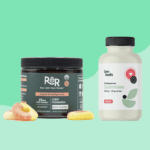


If I was to purchase CBD oil for pain relief, from overseas to Australia without a drs prescription, would it be illegal for me to drive? I understand CBD is safe to drive with, but I dont want to break the law if i get pulled over and charged. I’d love to wait until I get authorisation ftom my Dr for CBD, but im in pain now and I need relief.. I can’t seem to get a definite answer on this subject. Your help would be greatly appreciated
Hey Tessa, it should be fine. For starters, CBD will not impair you in any way unless you take a very large amount (which can make you sleepy/tired). Also, the police have no reason to pull you over when you’re taking CBD since it doesn’t impair your driving.
Finally, drug tests only look for the presence of THC, not CBD. Although there is a small amount of THC in full-spectrum CBD products, it’s likely to low to cause a positive test. And you’re unlikely to get tested anyway since they’d need suspicion of you driving under the influence of alcohol, cannabis, etc.